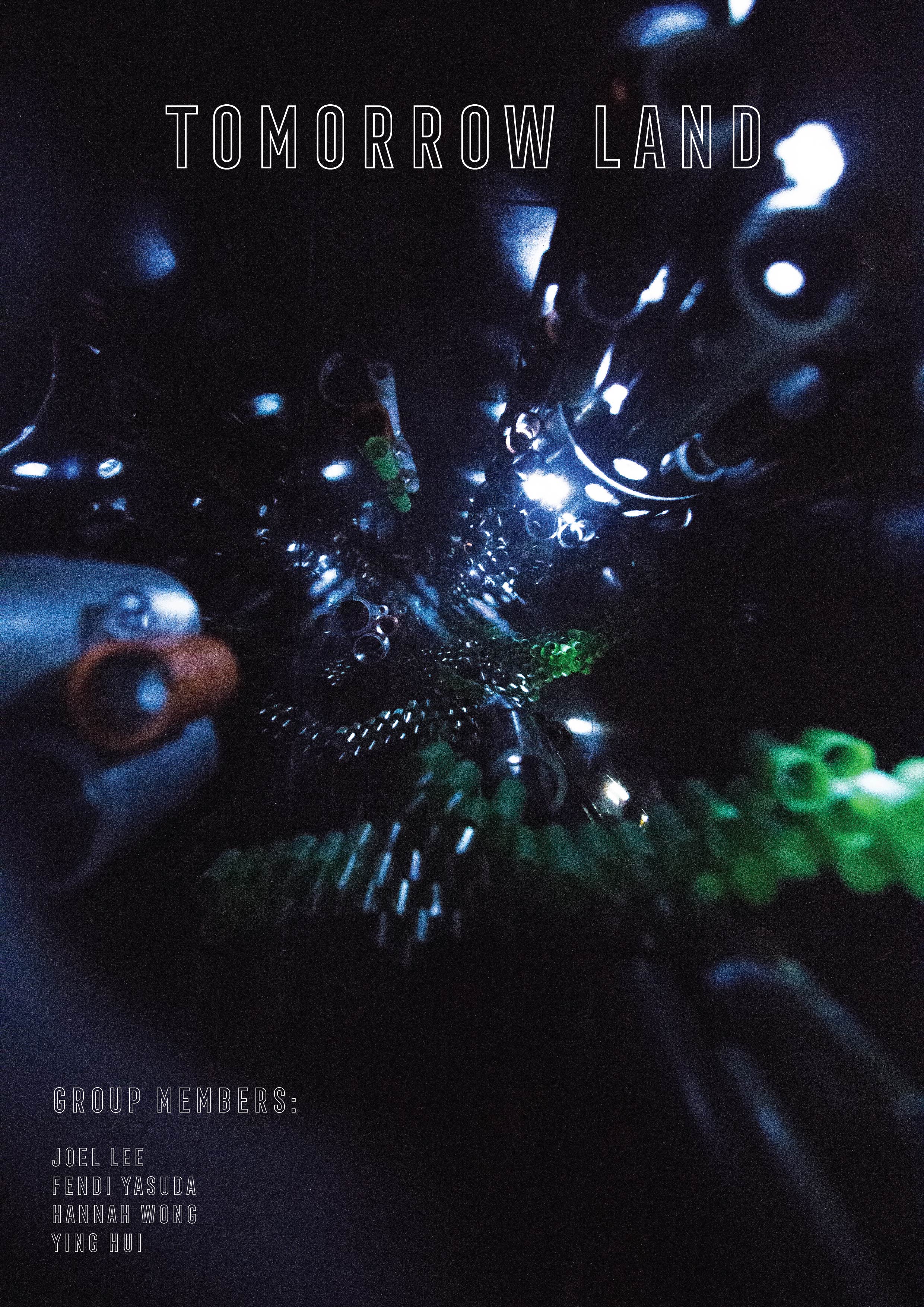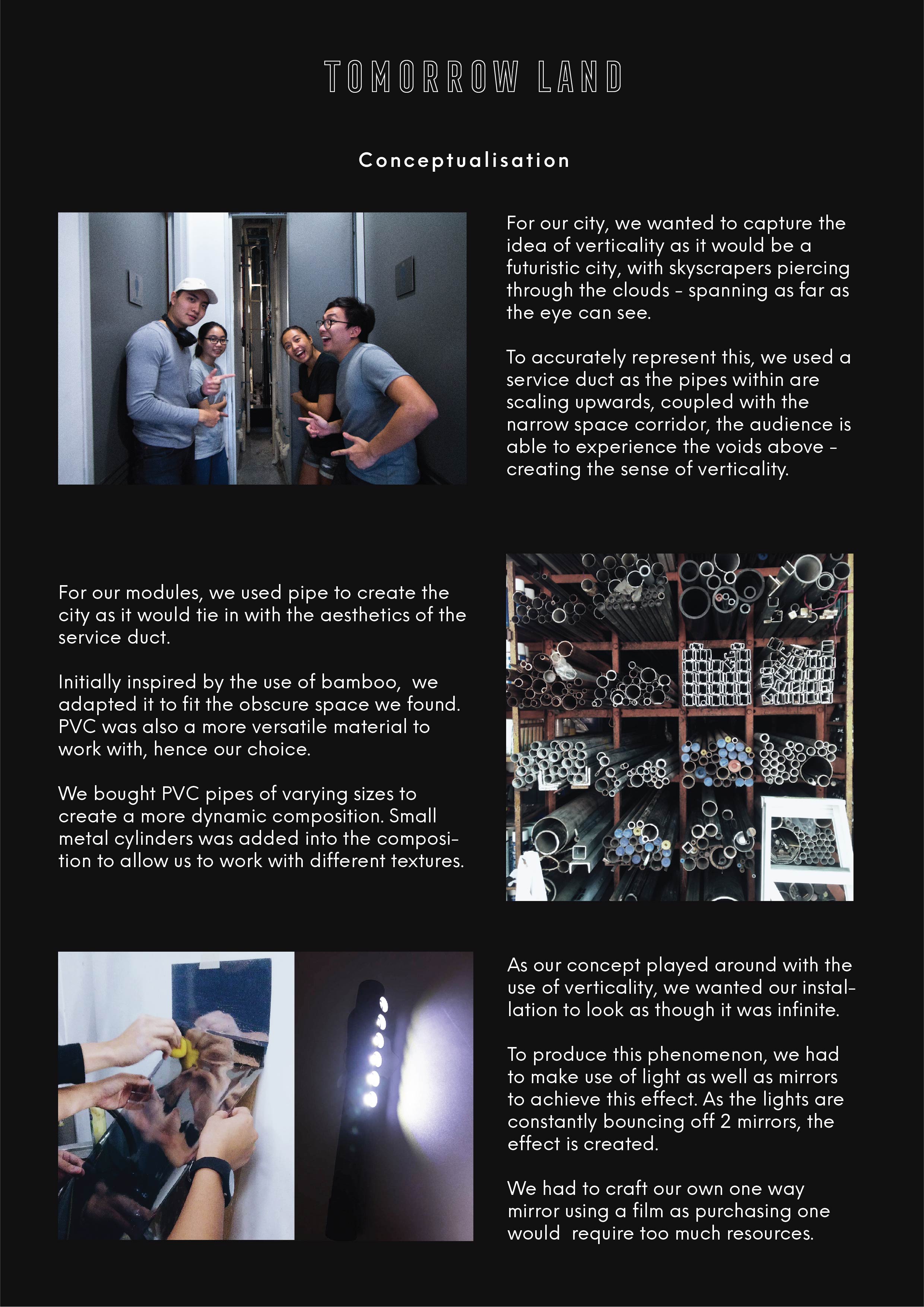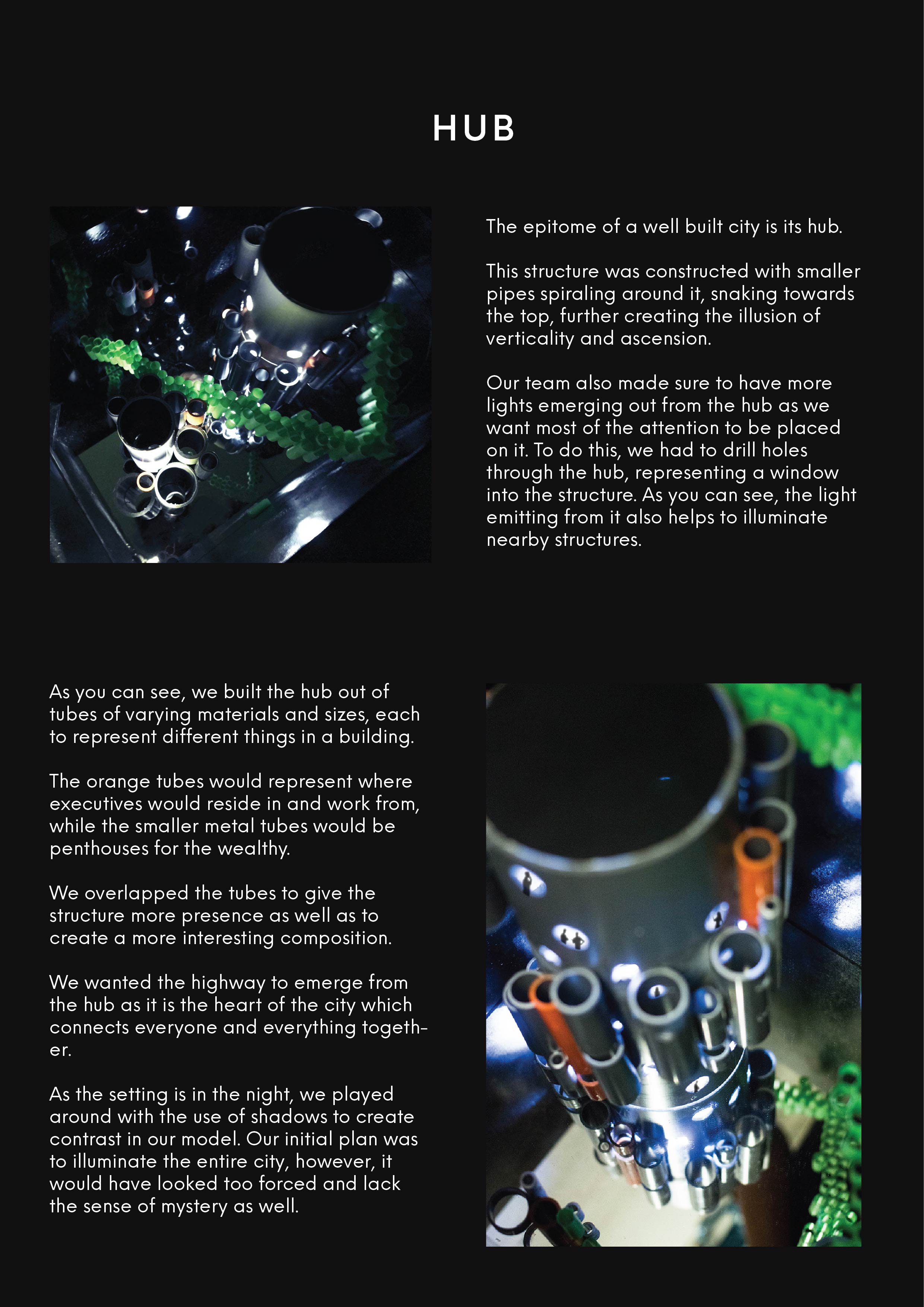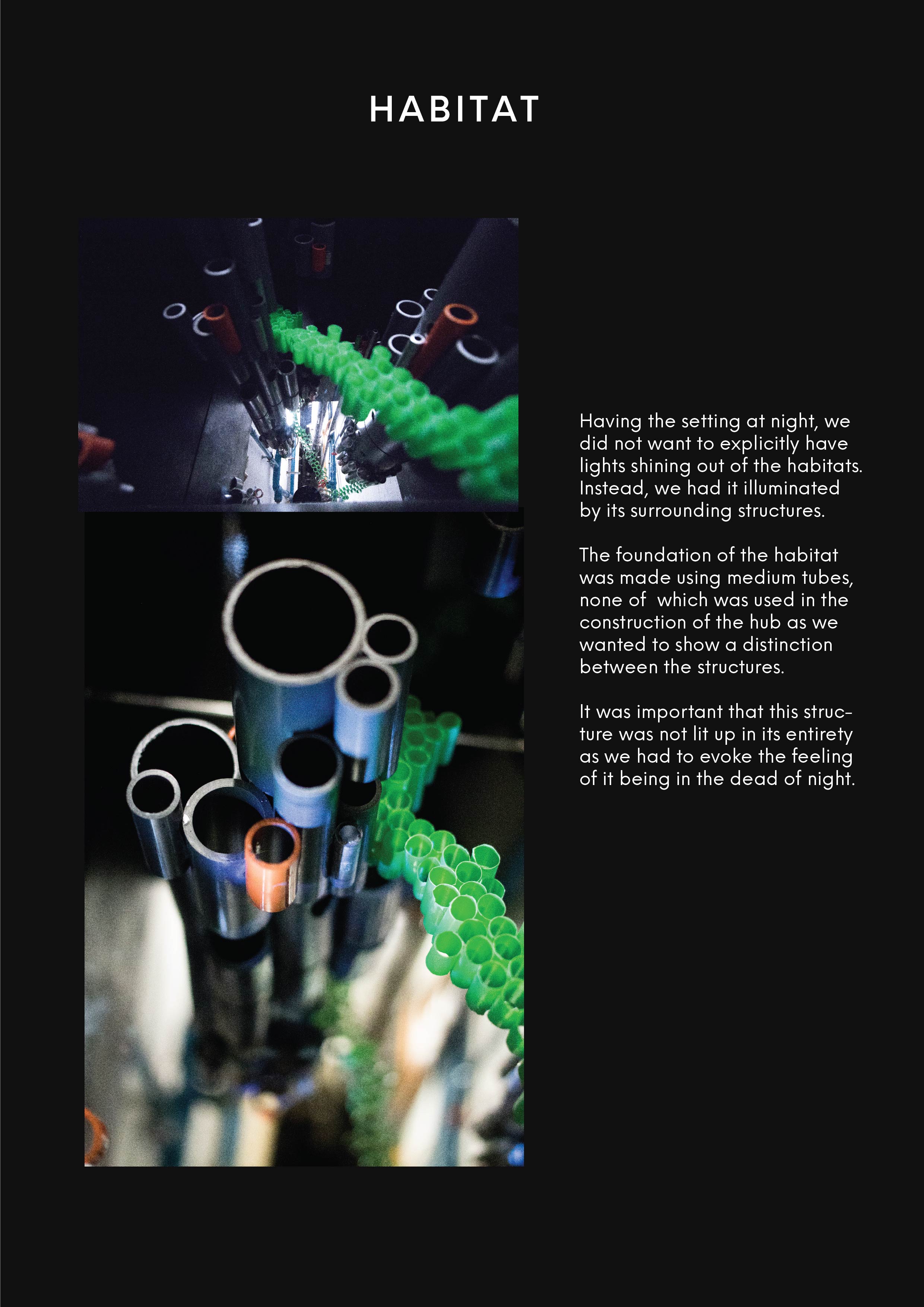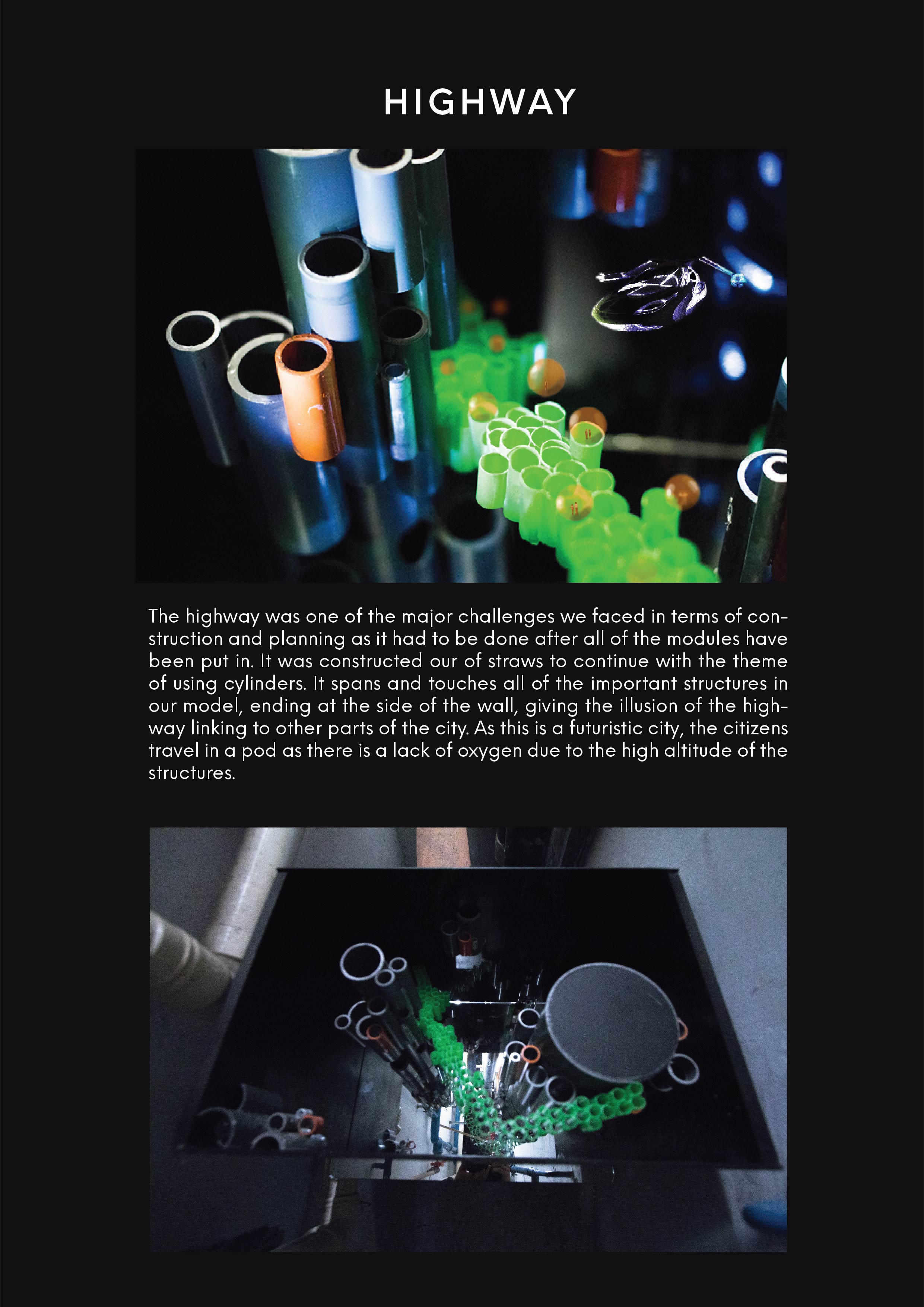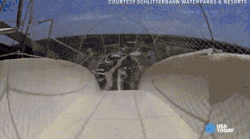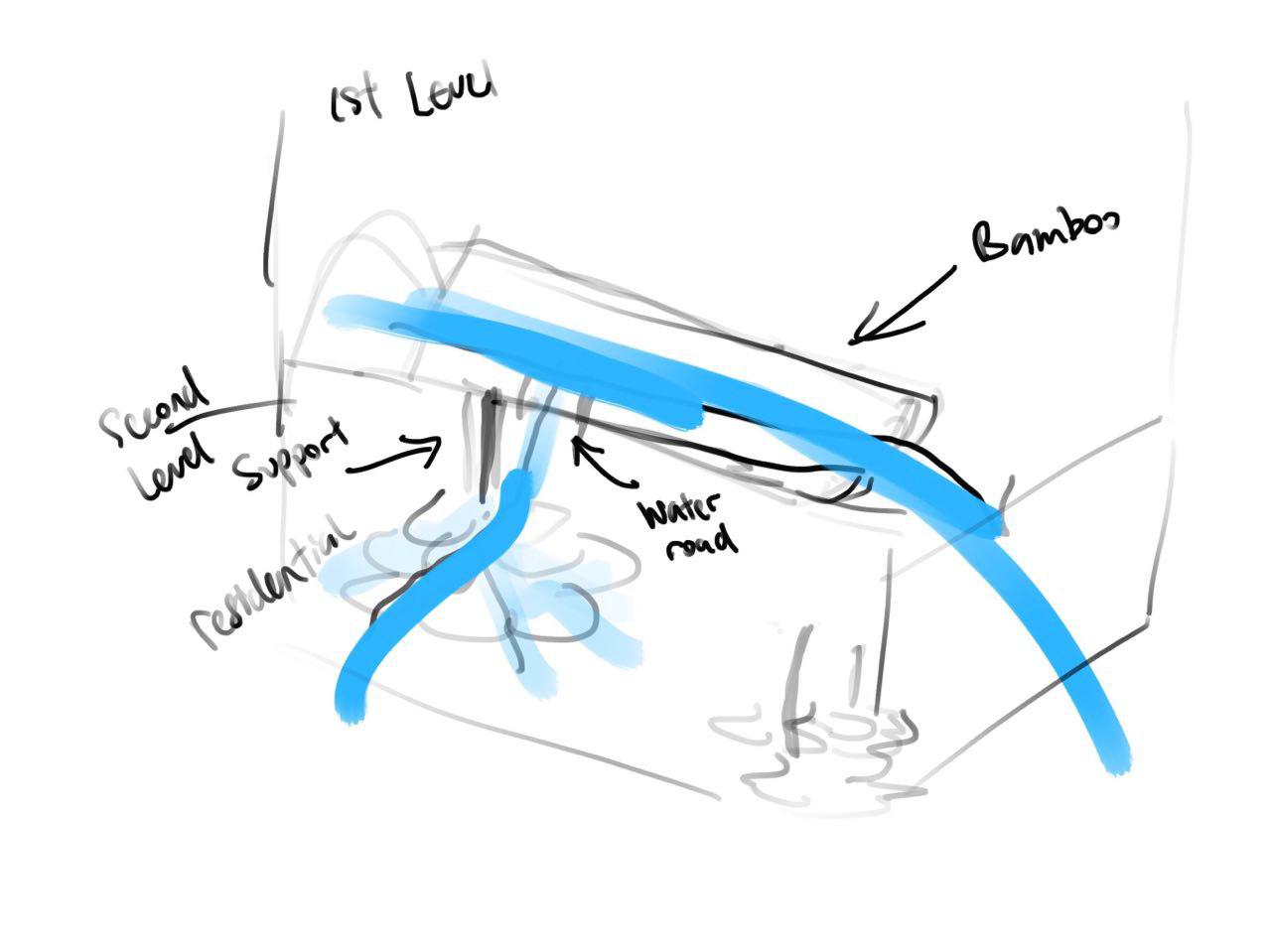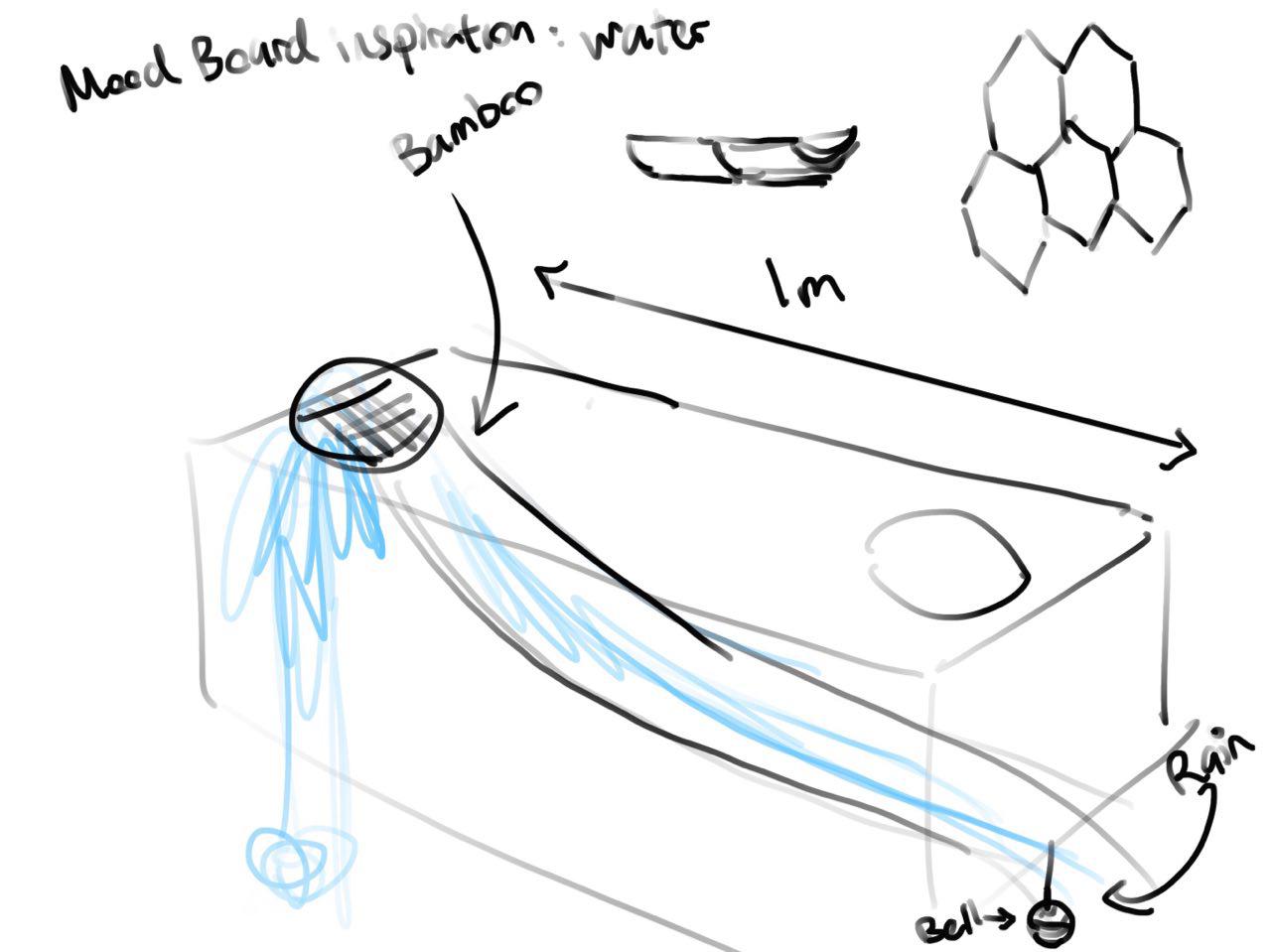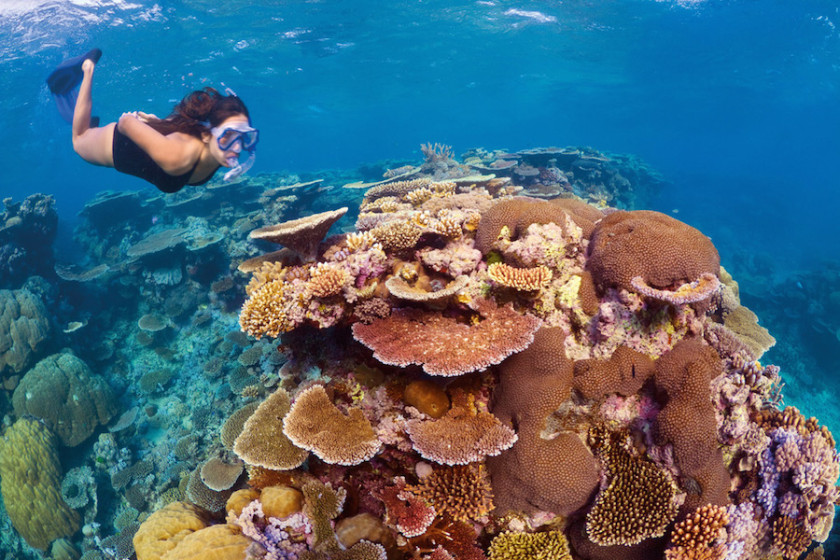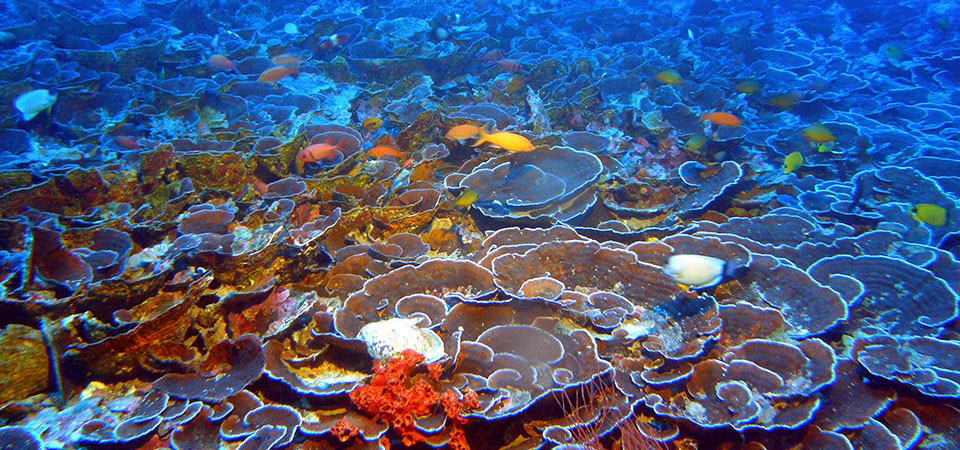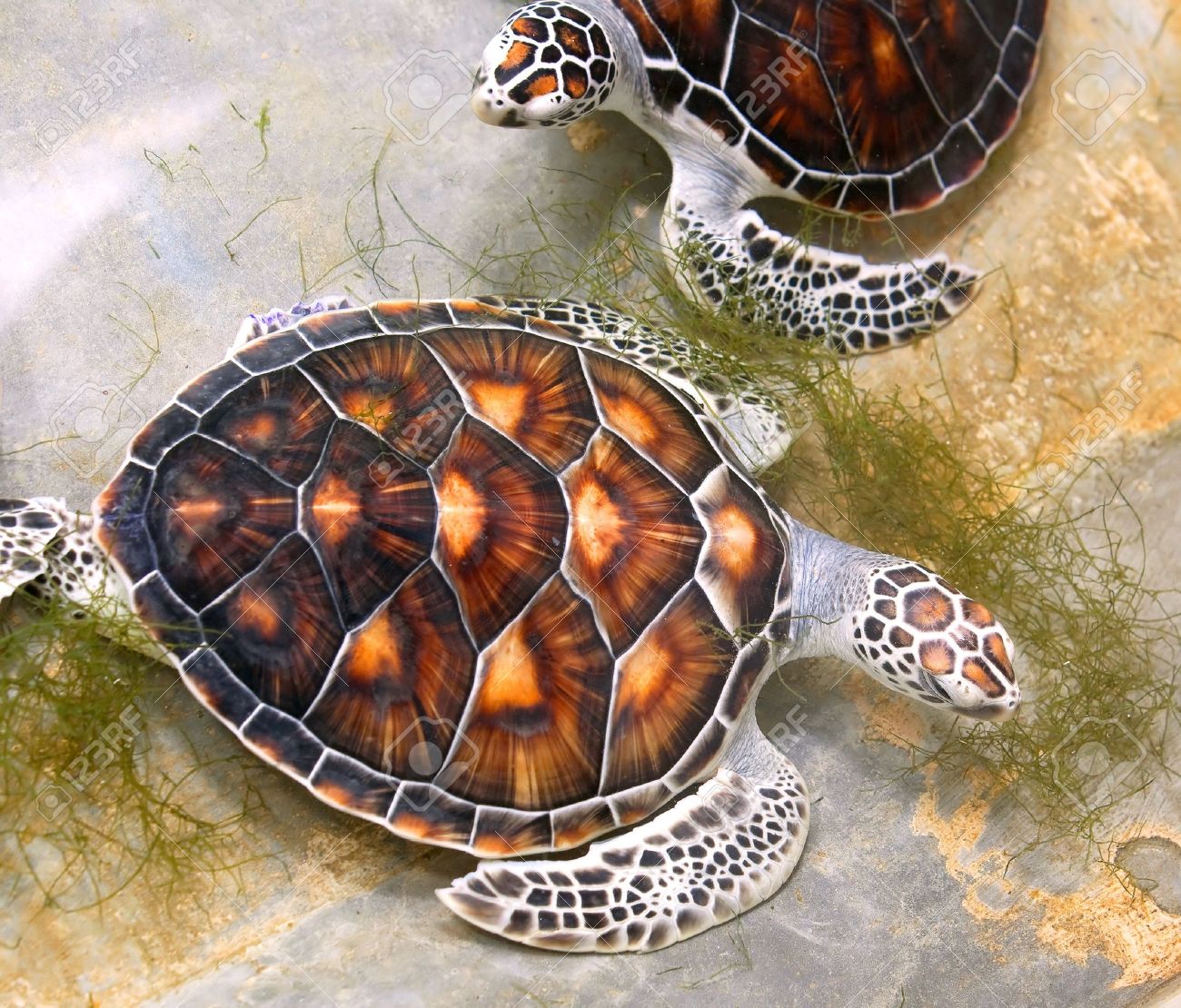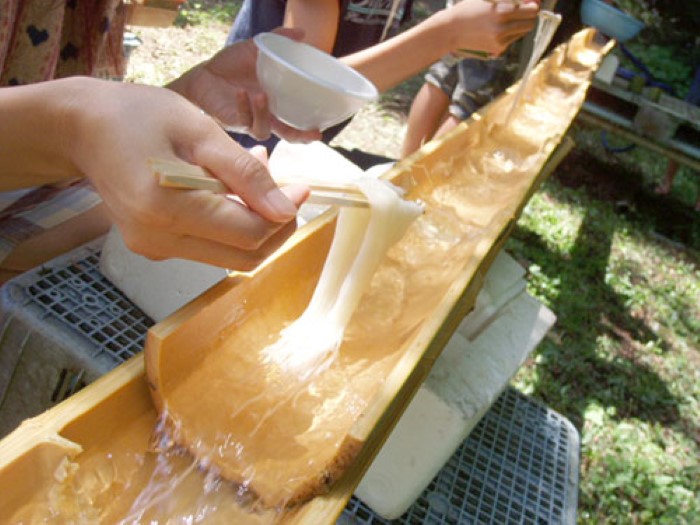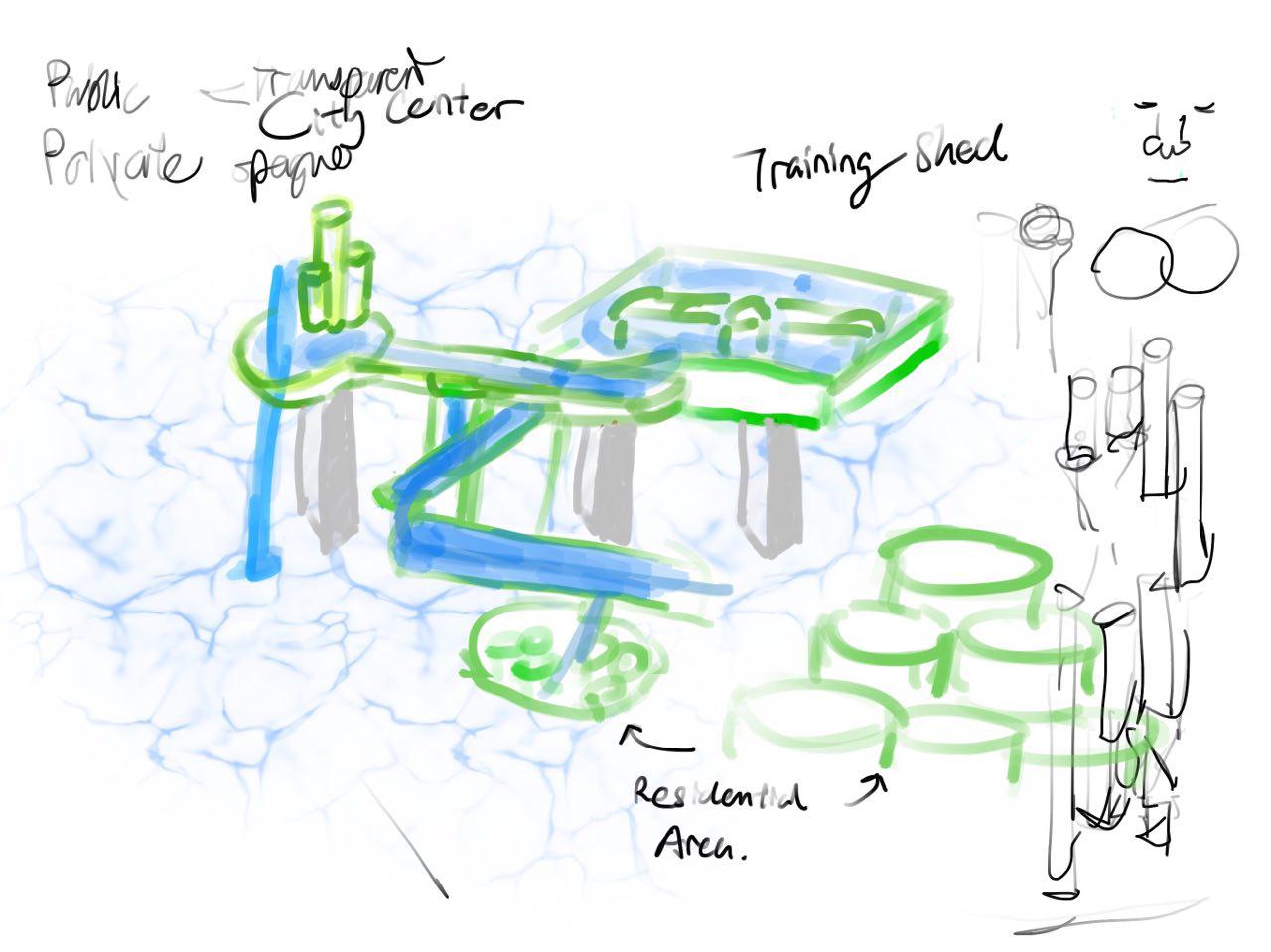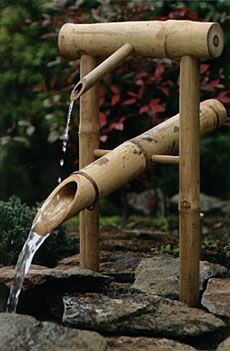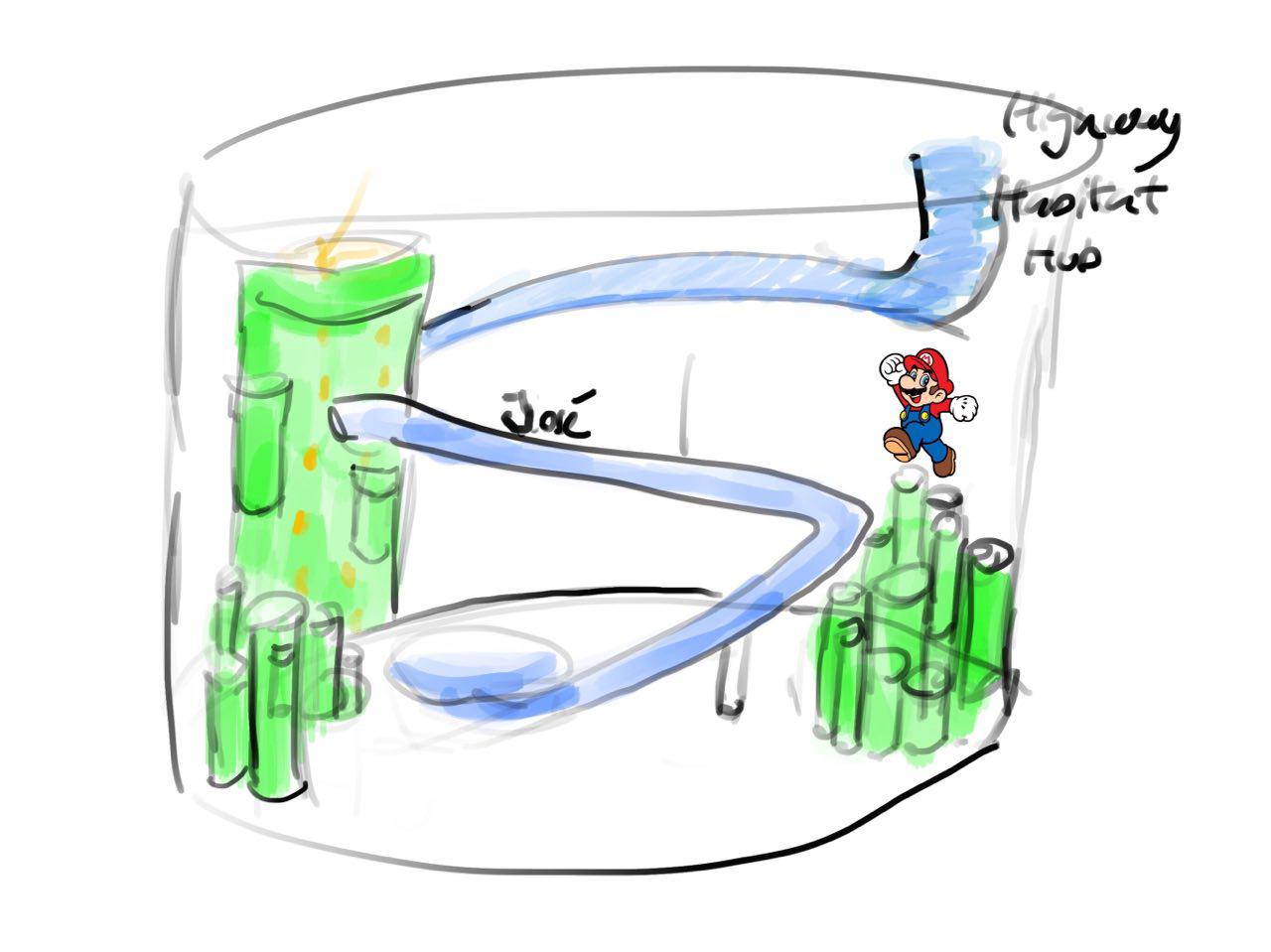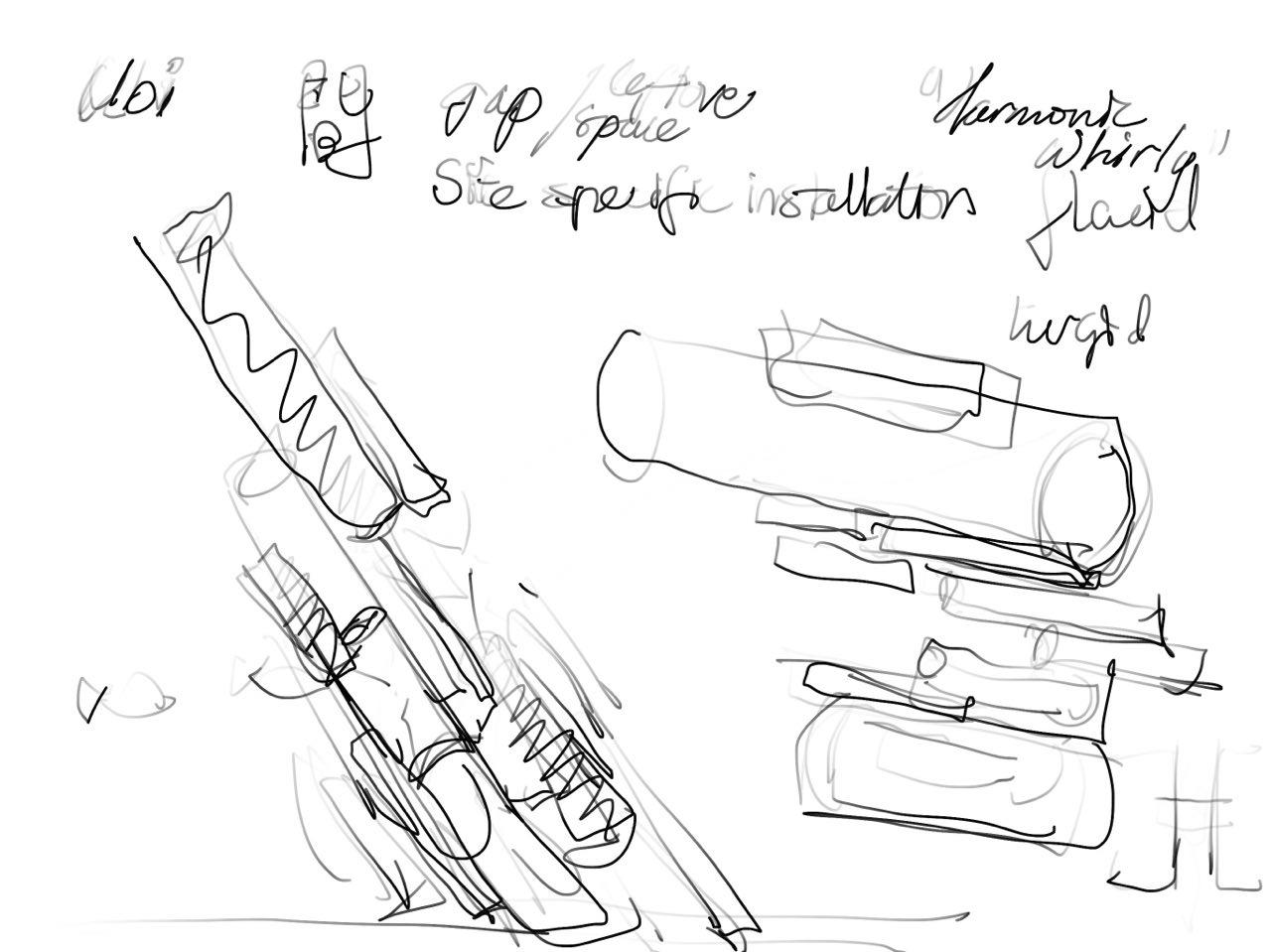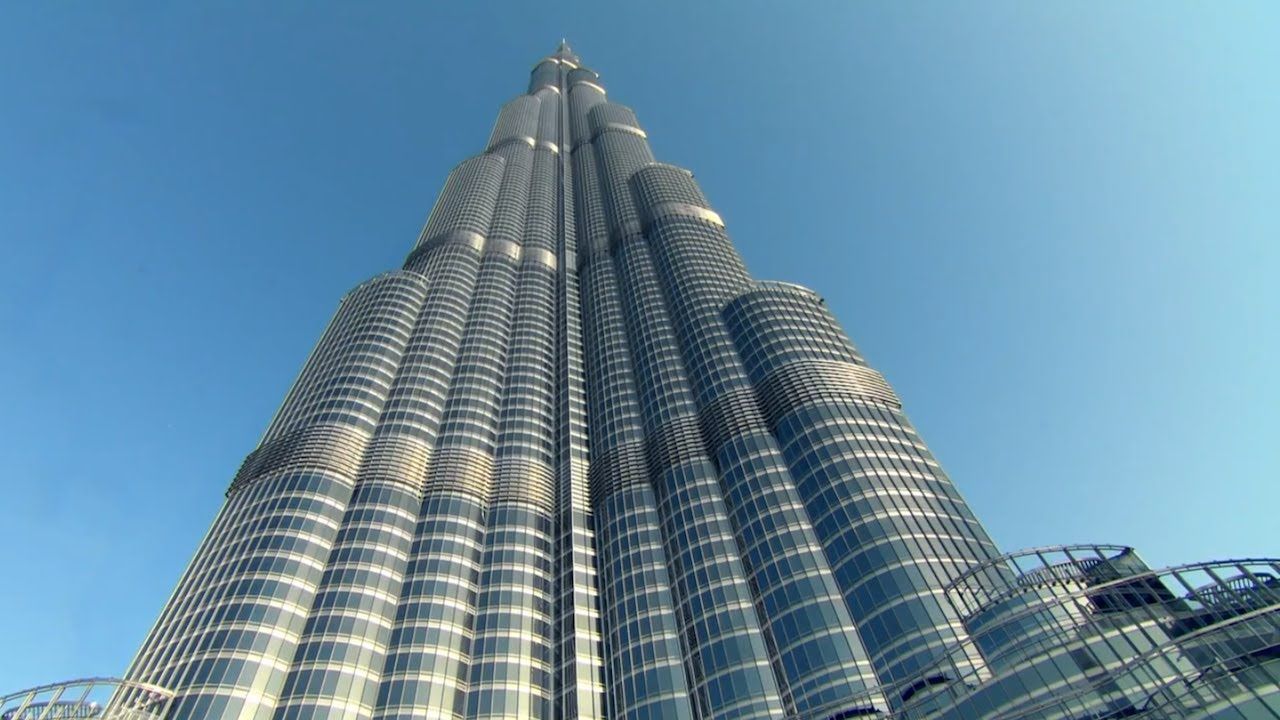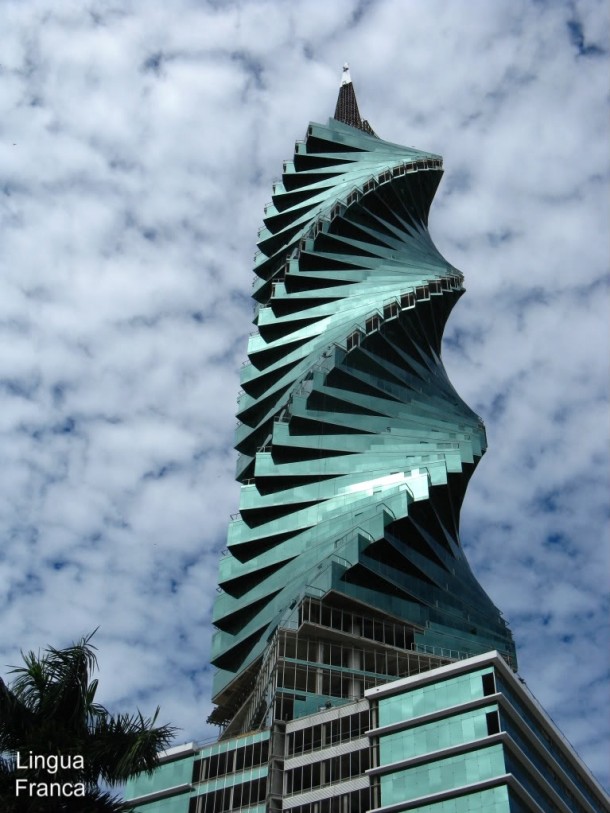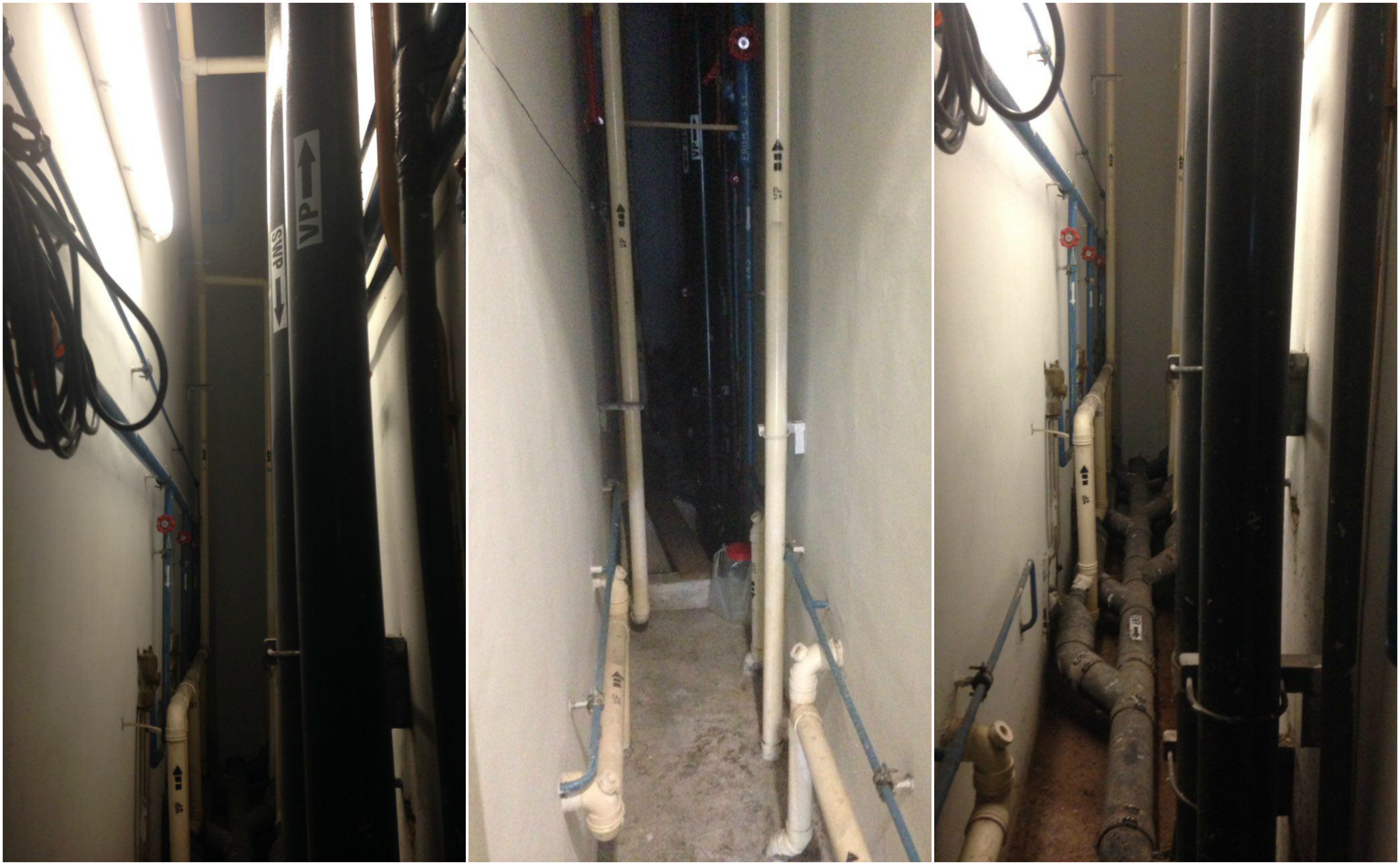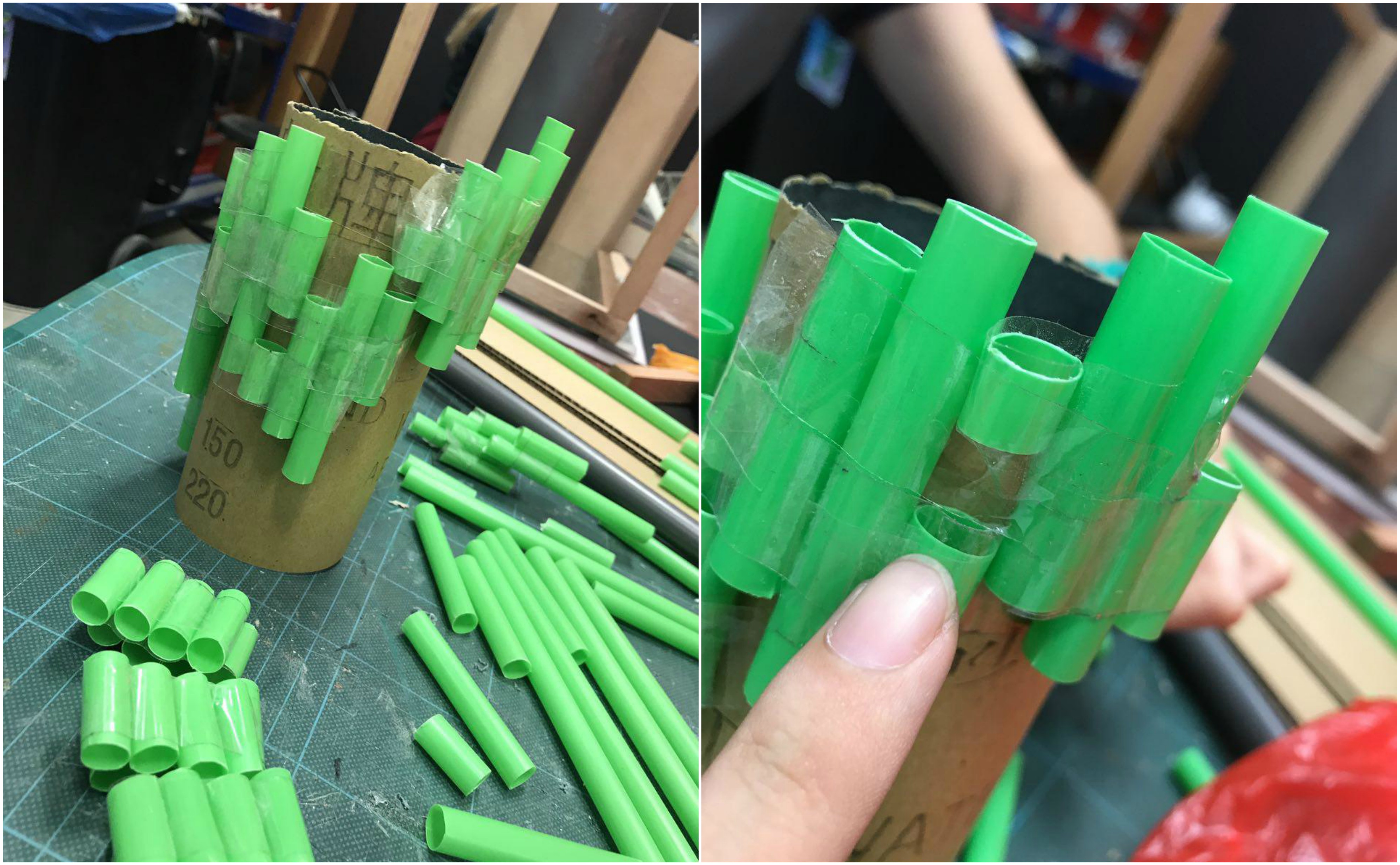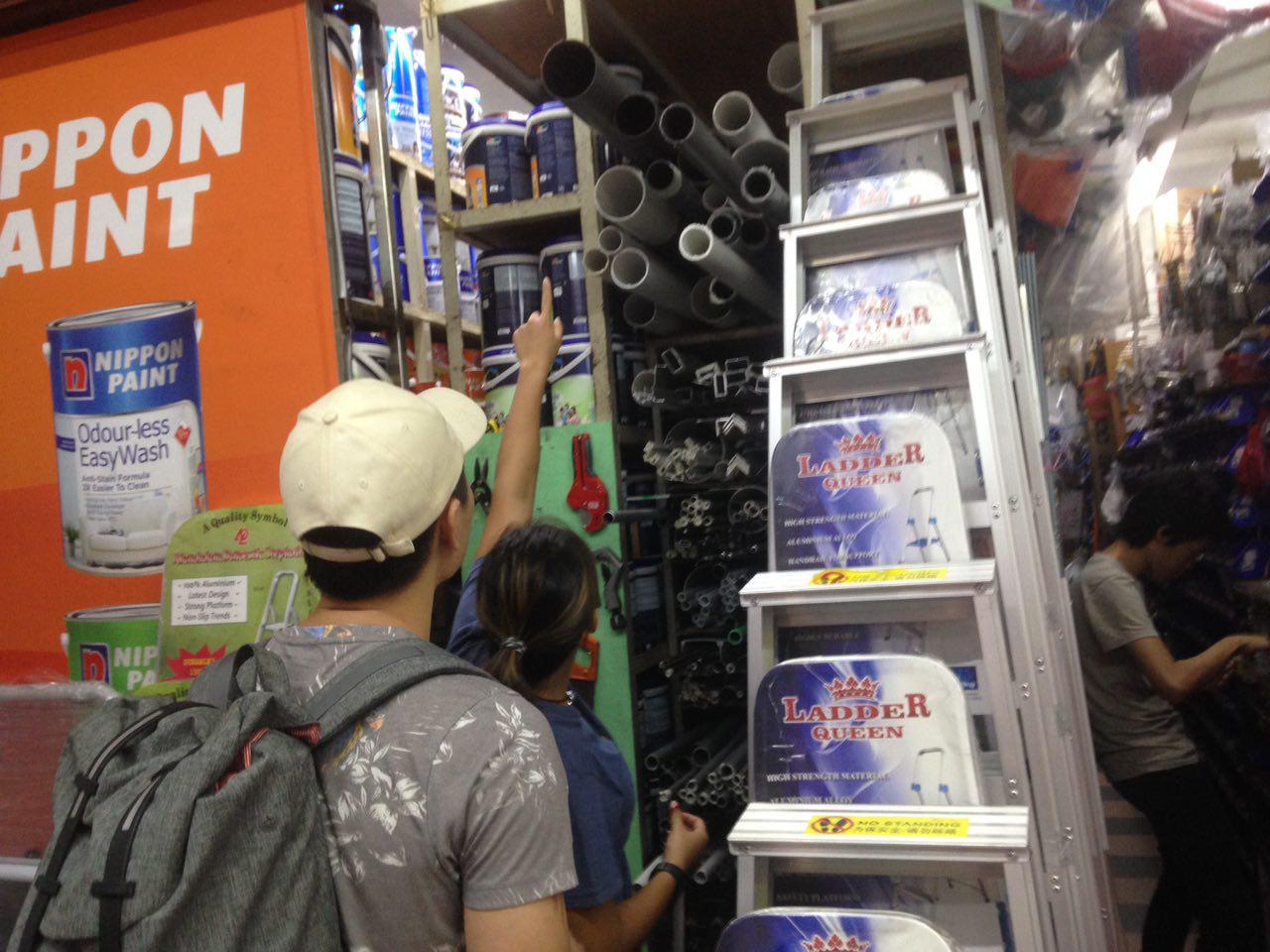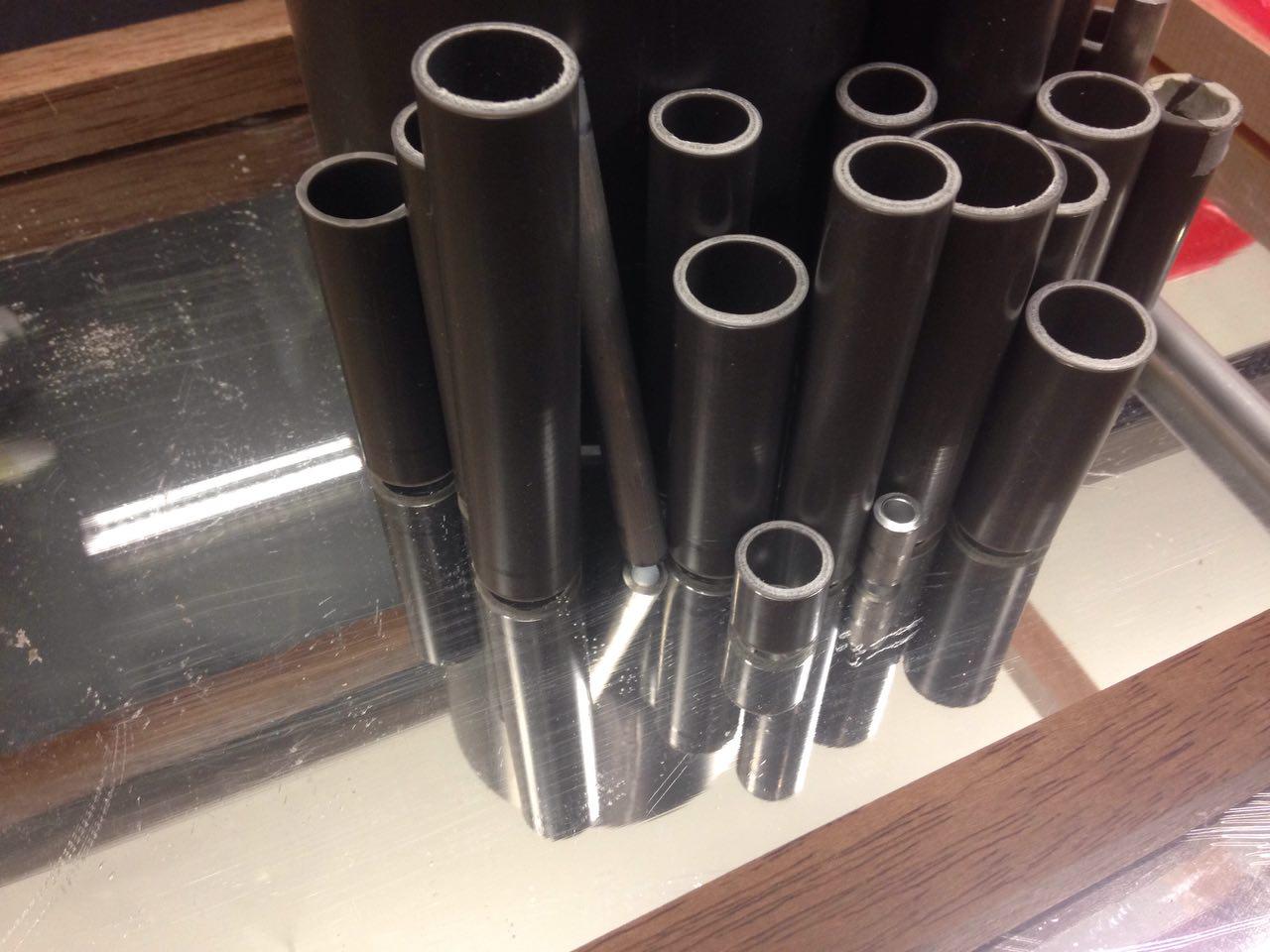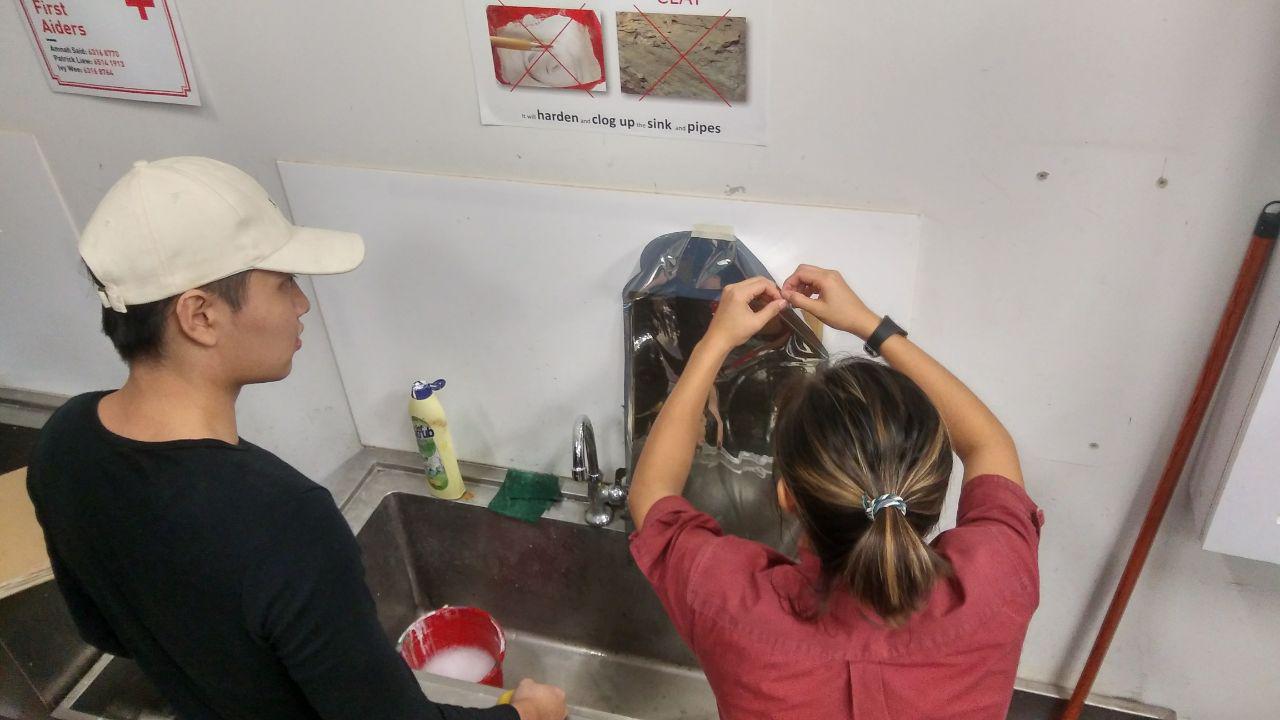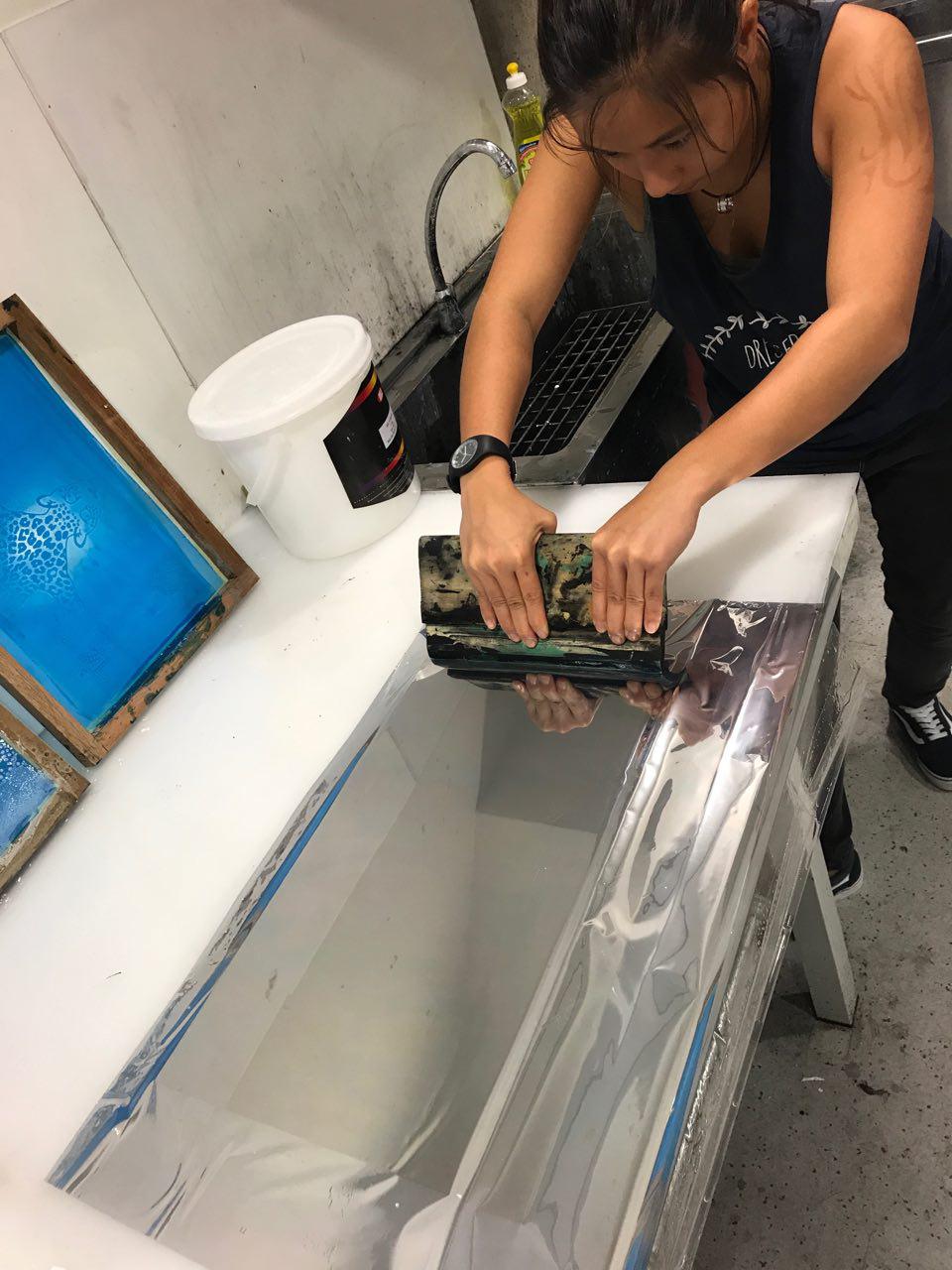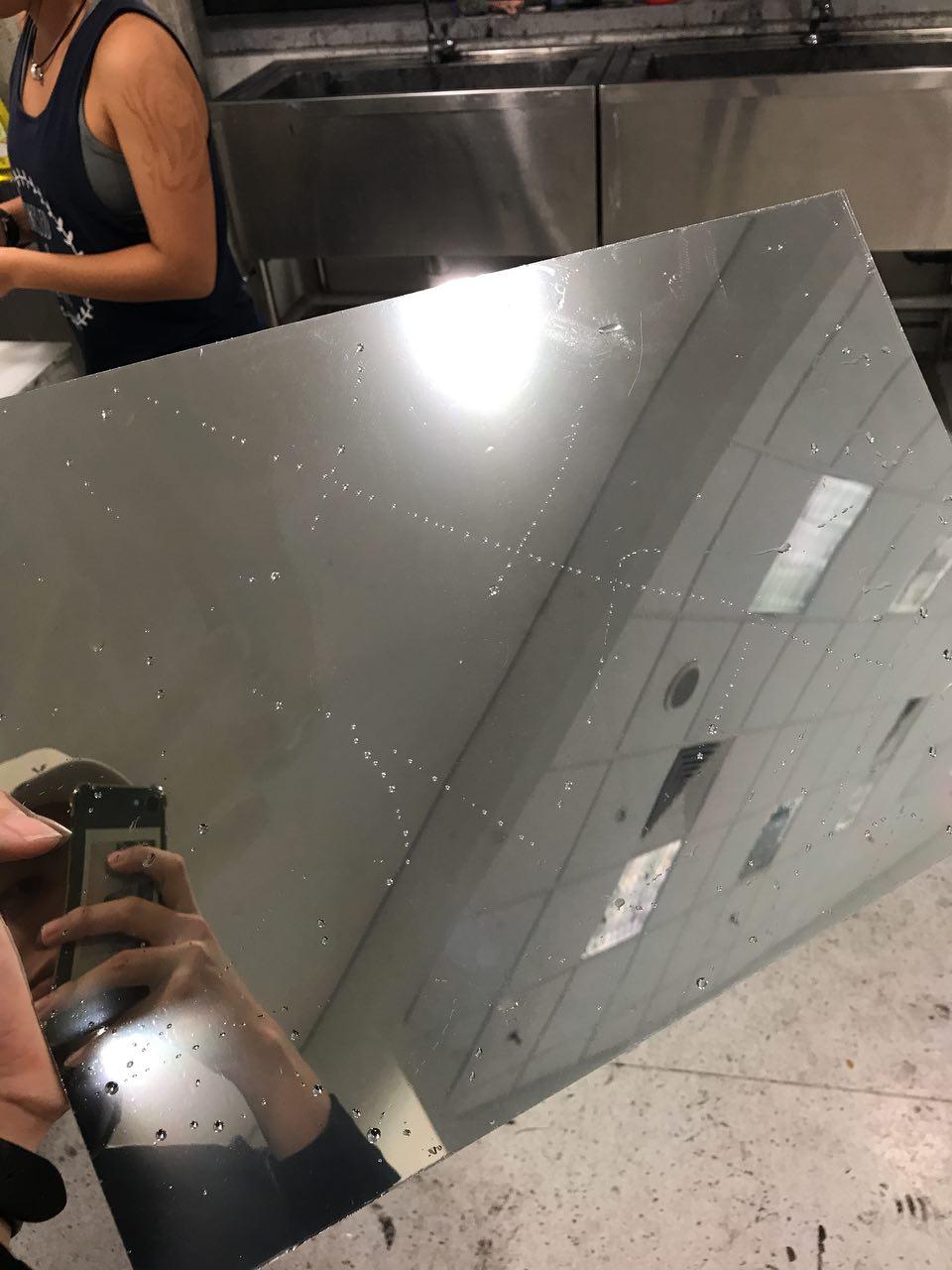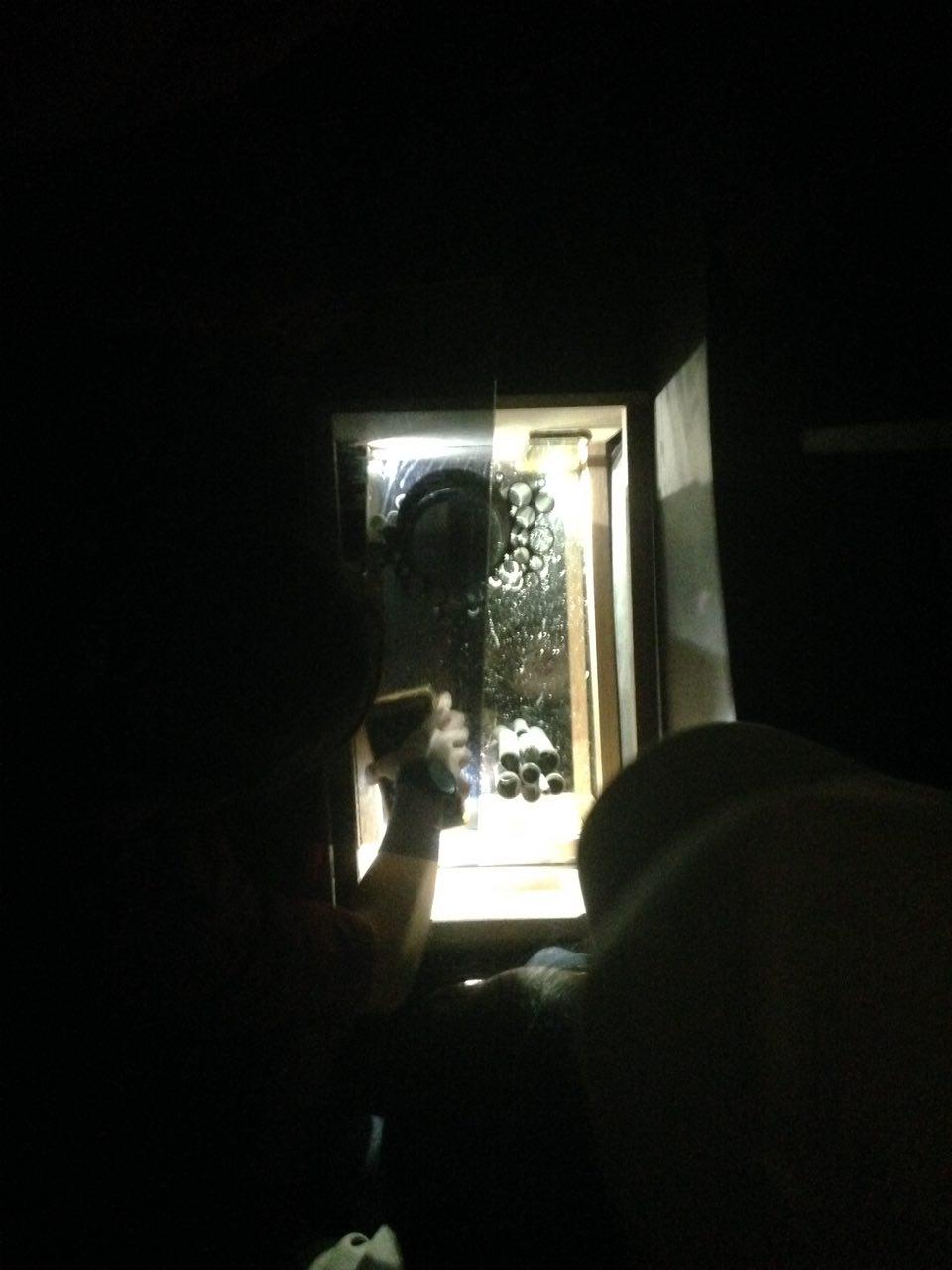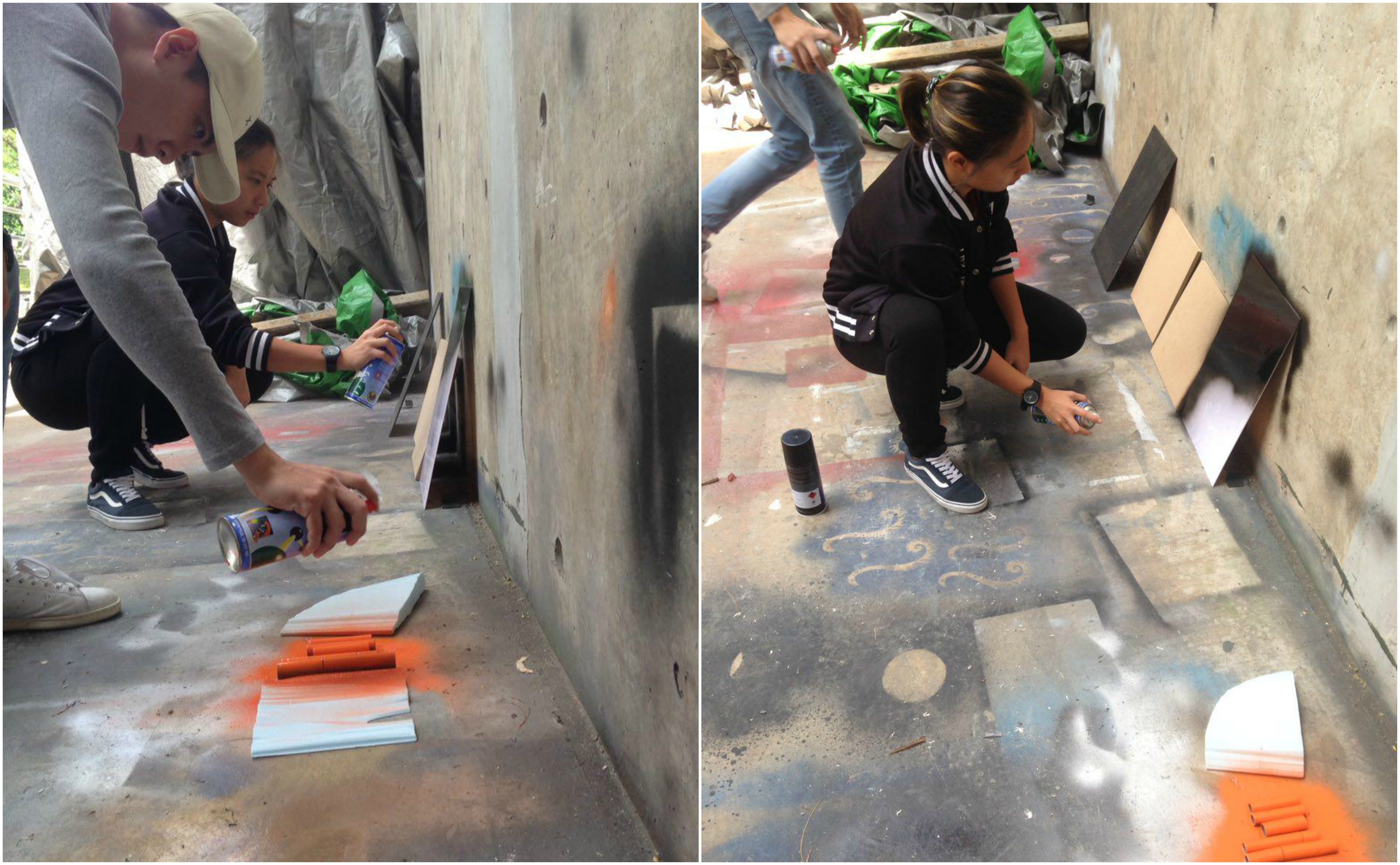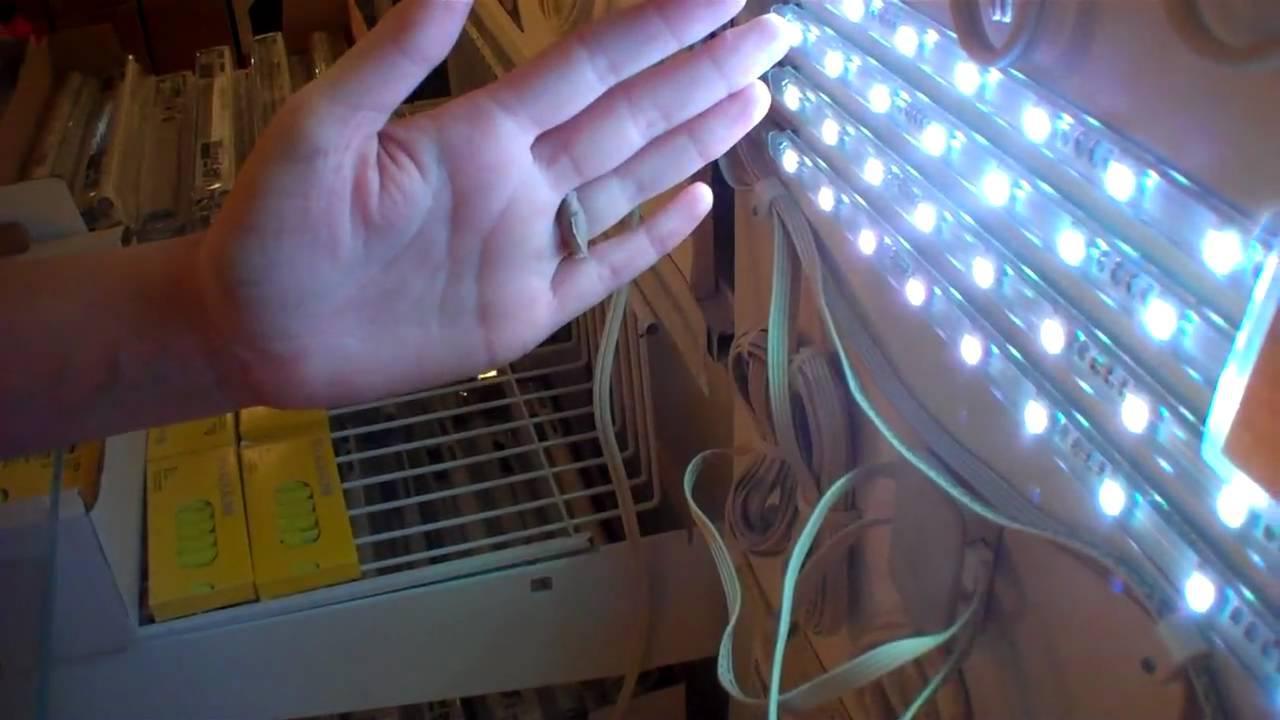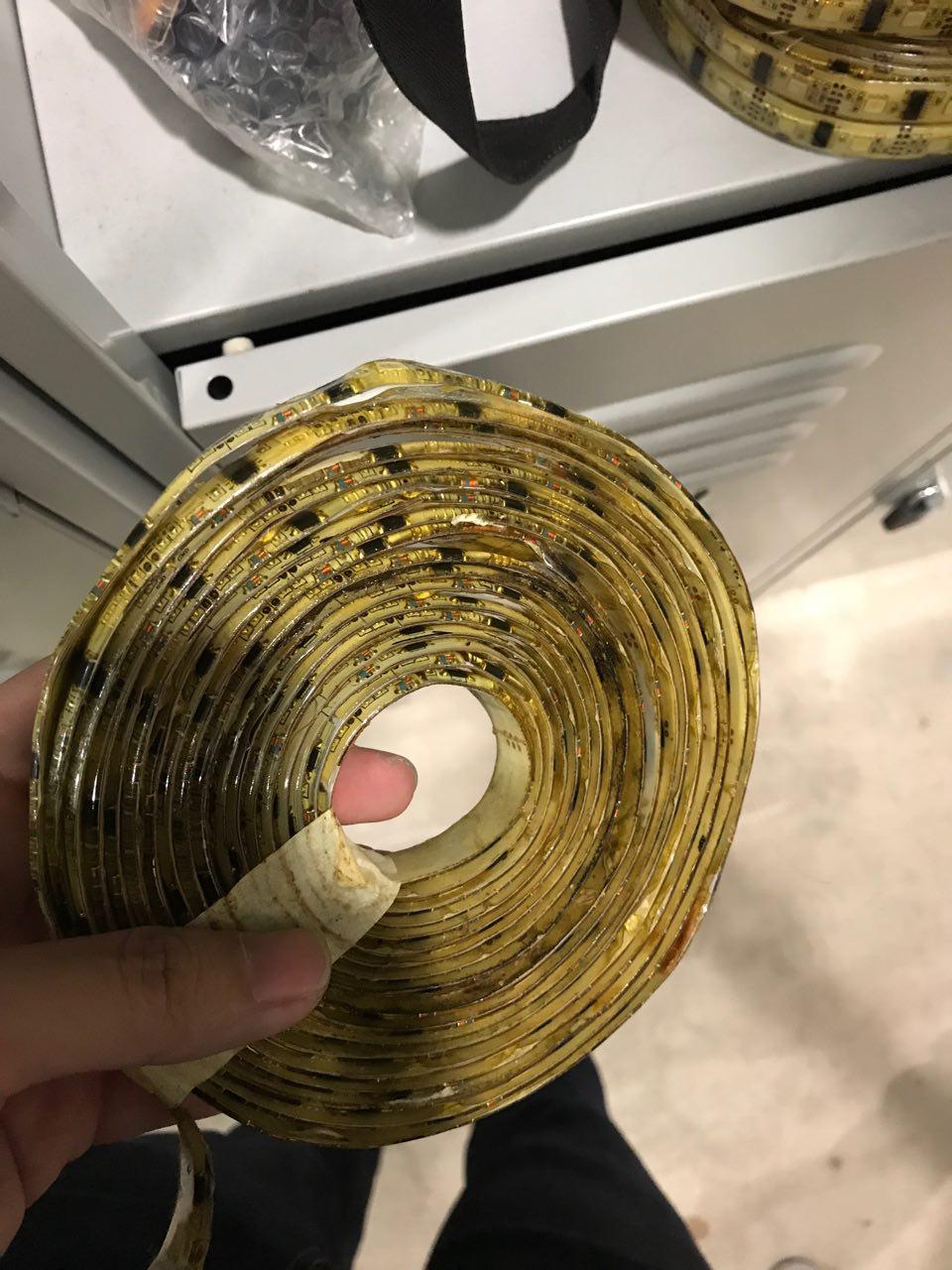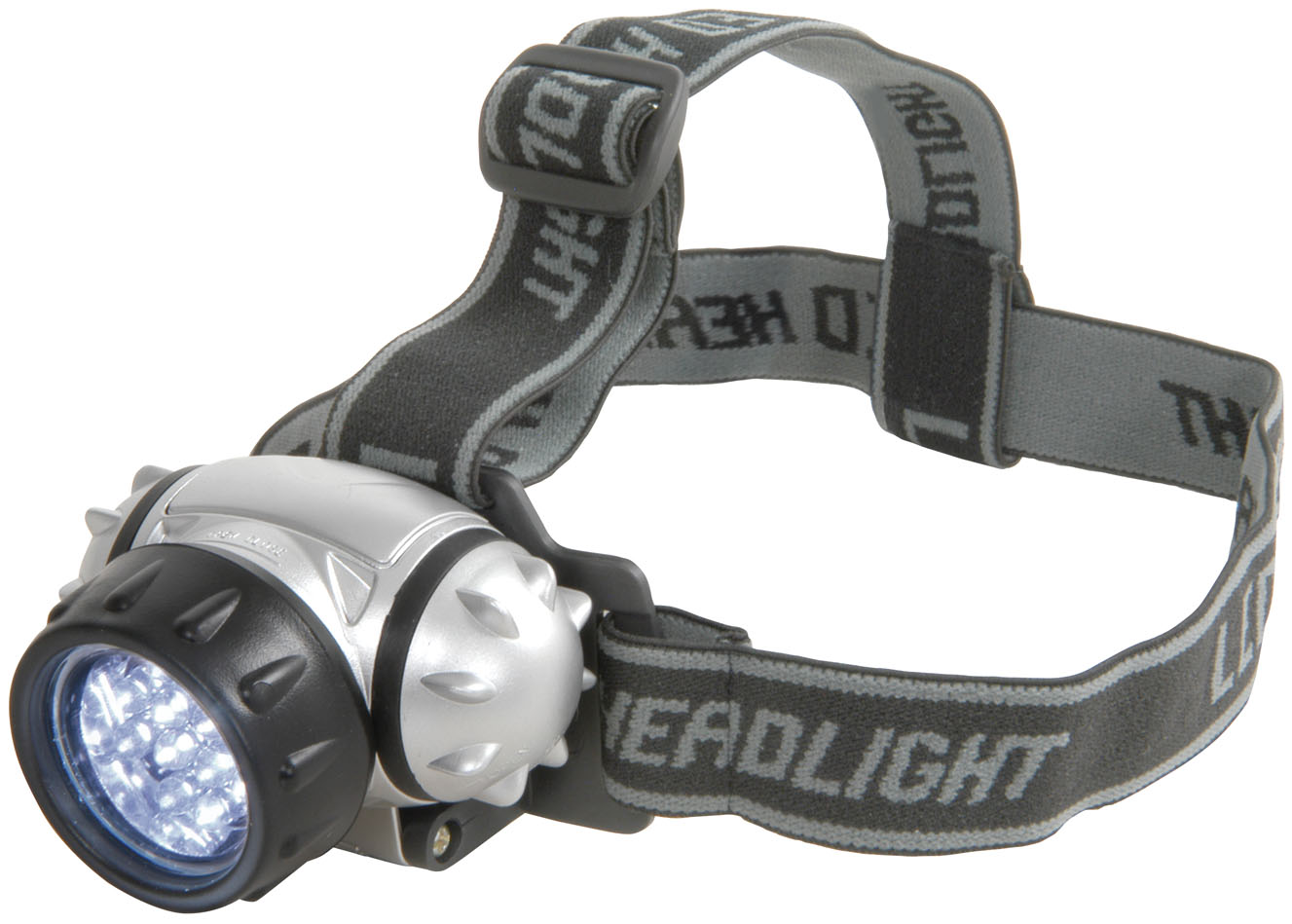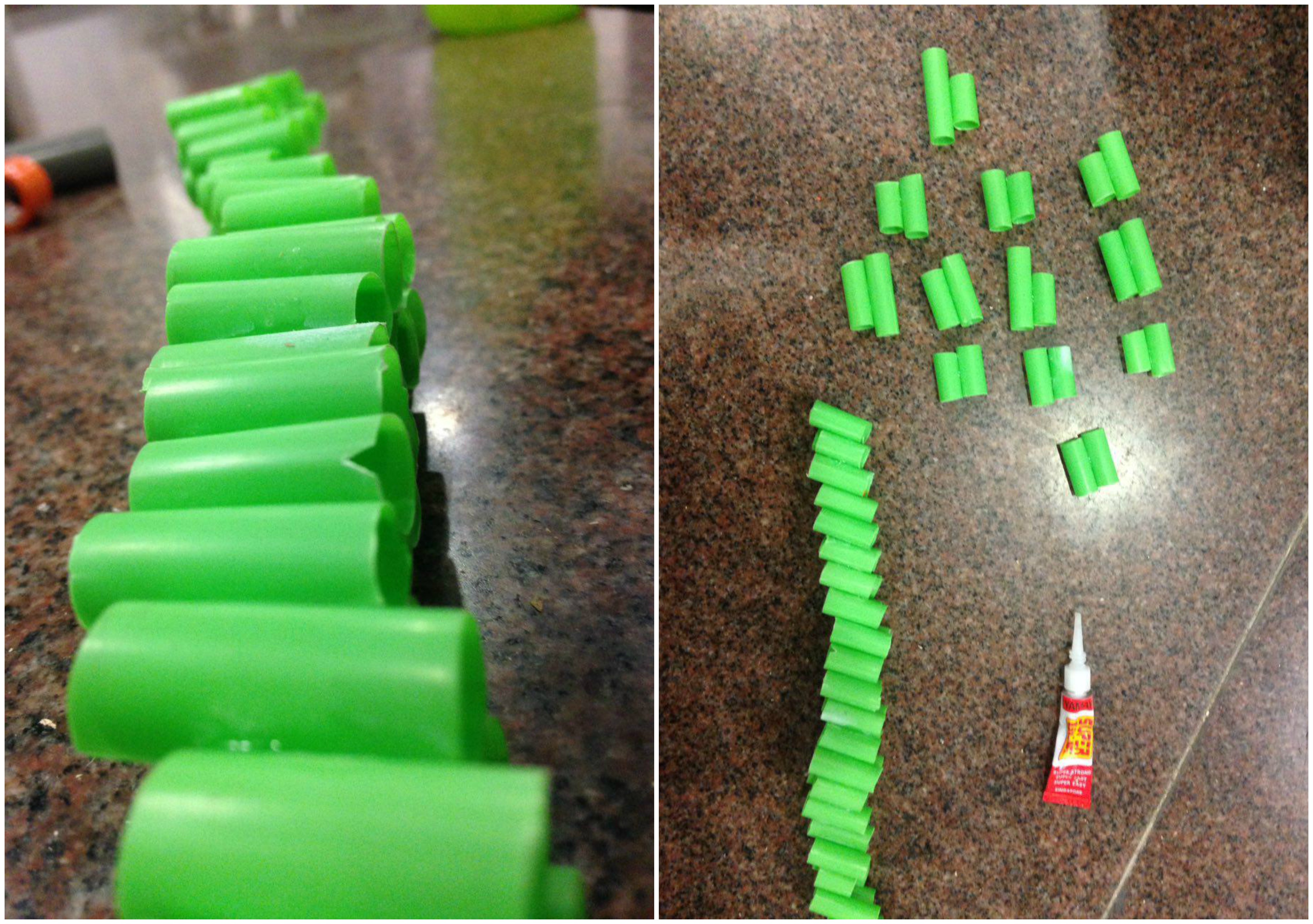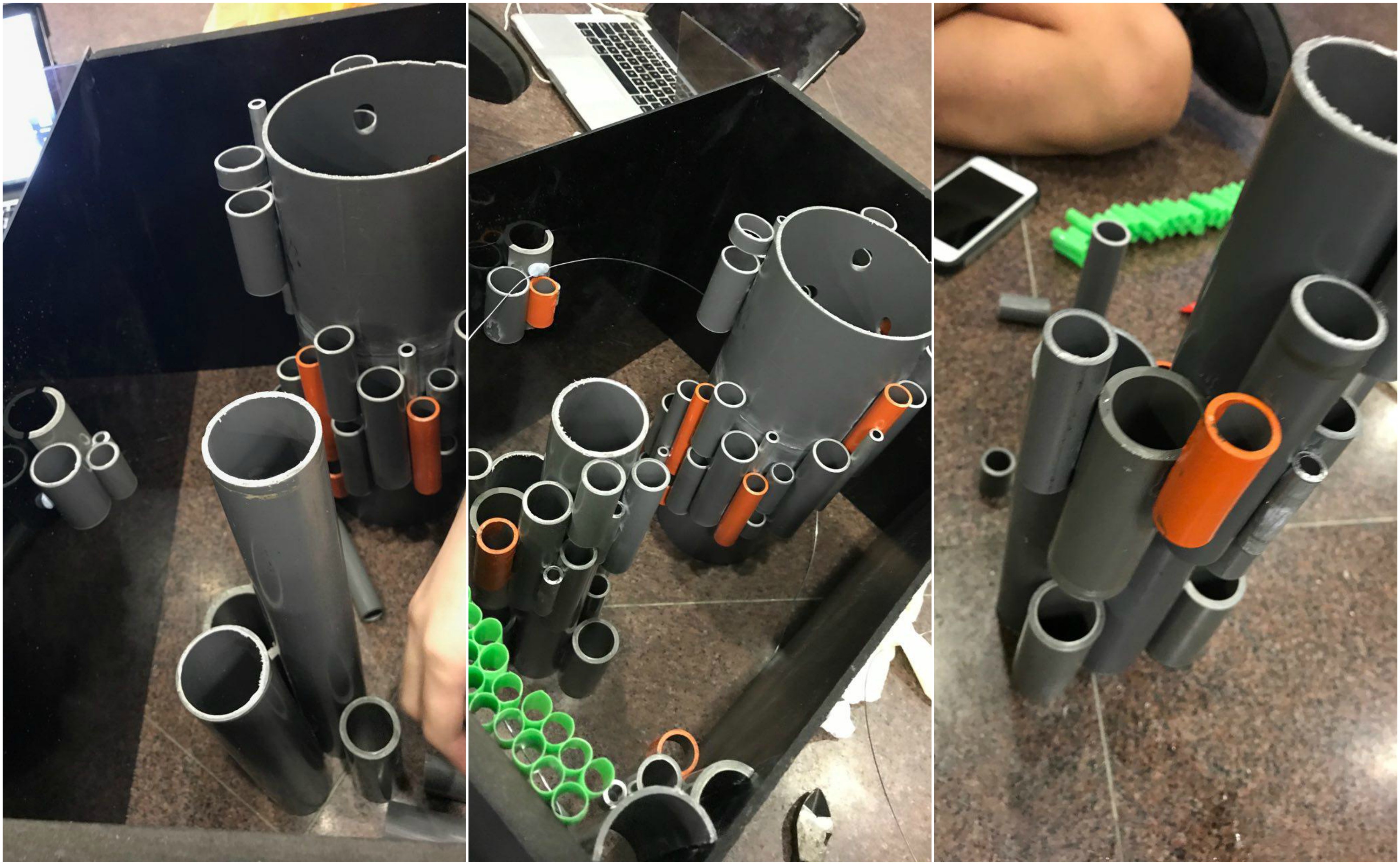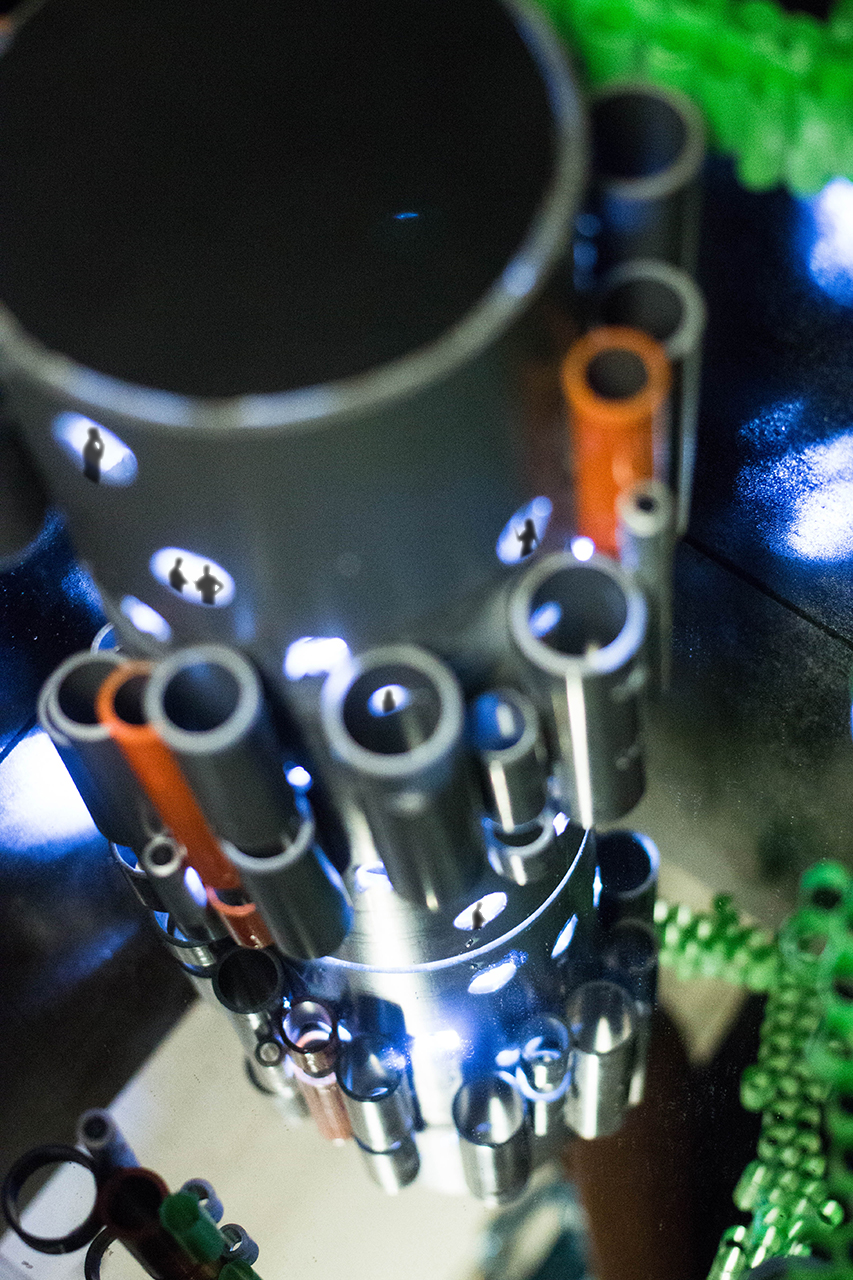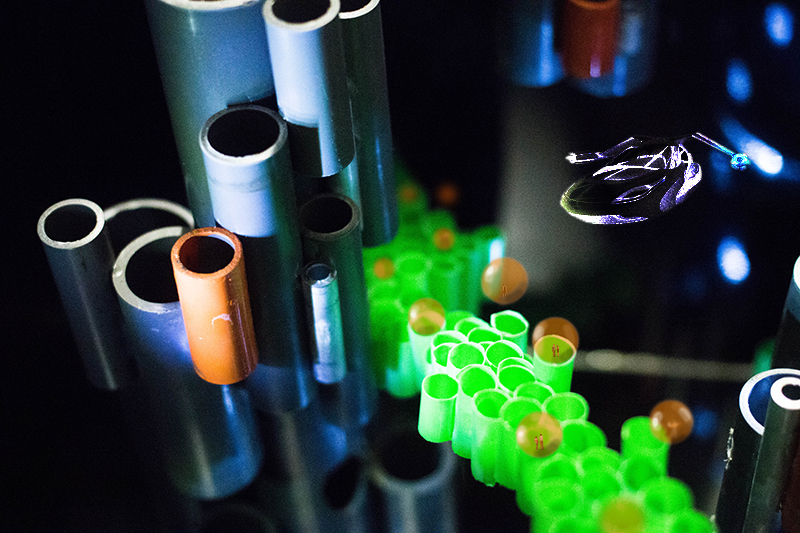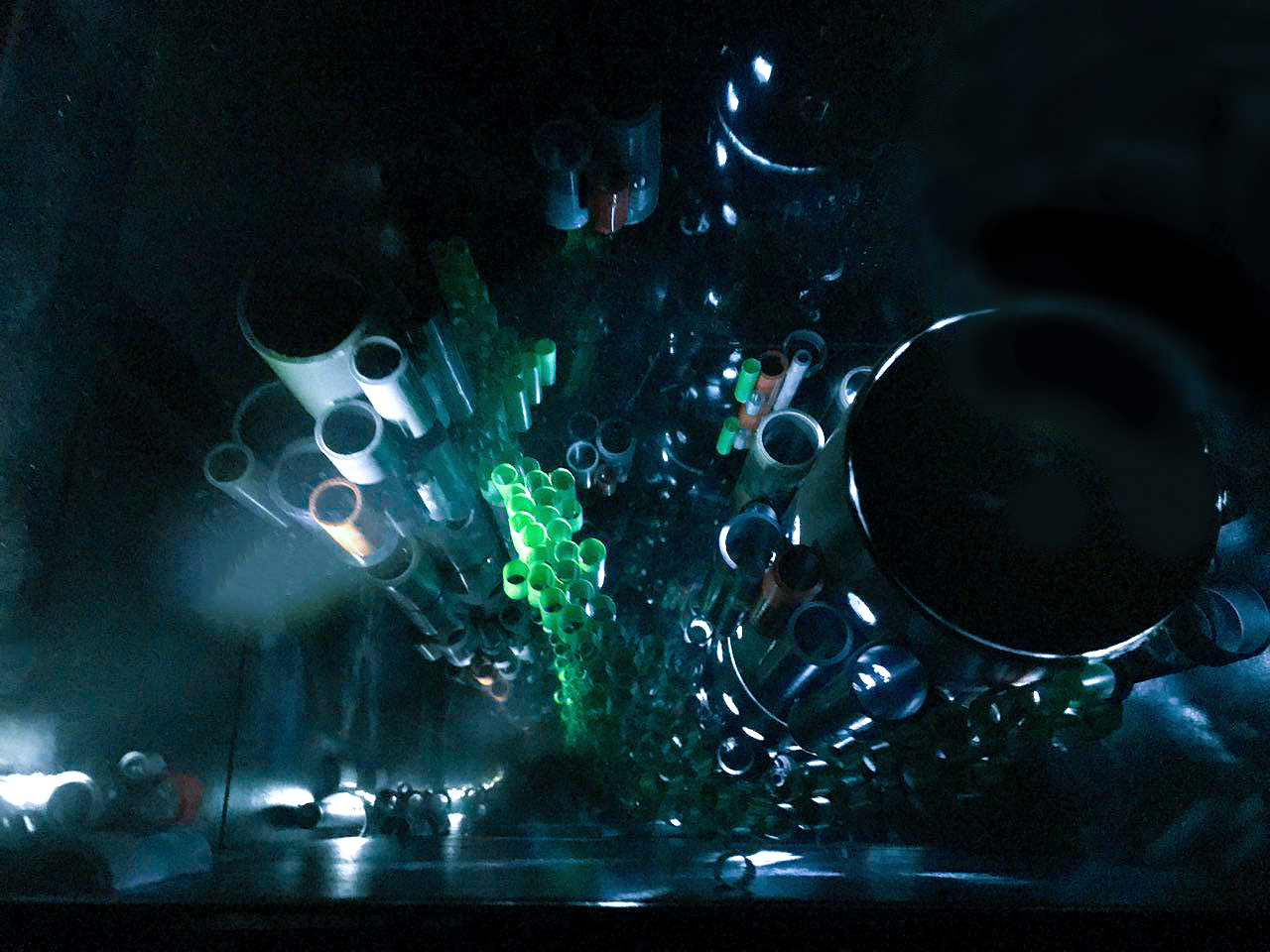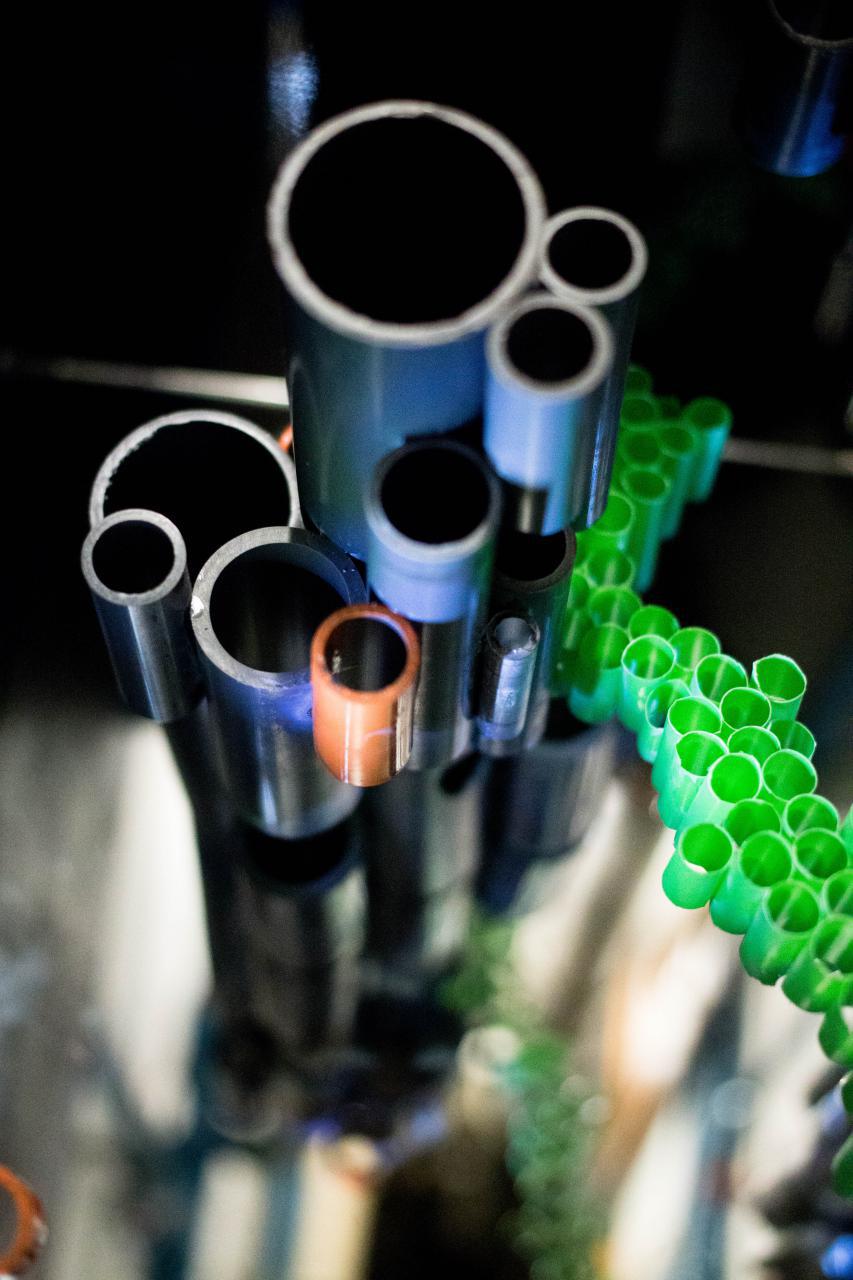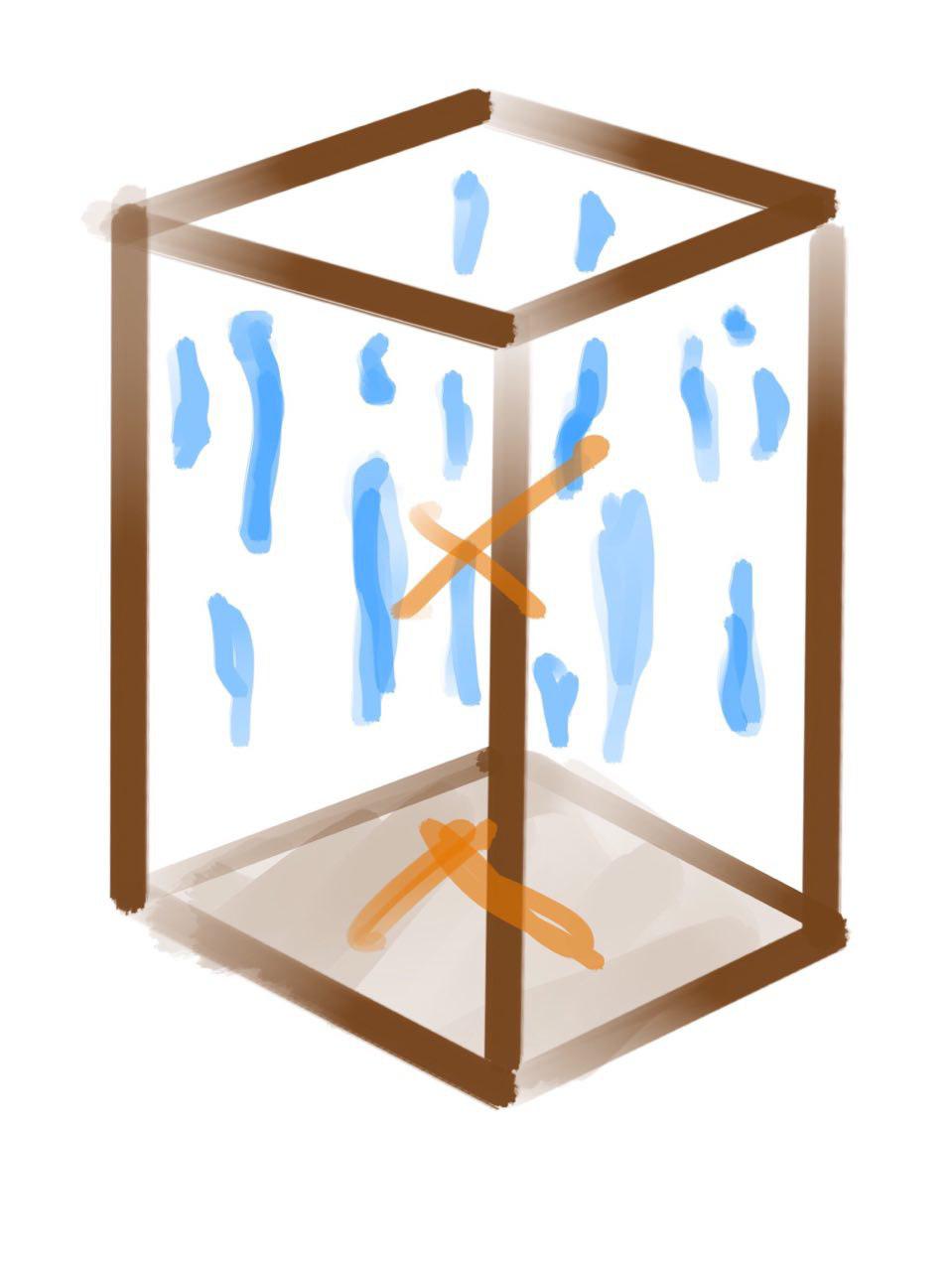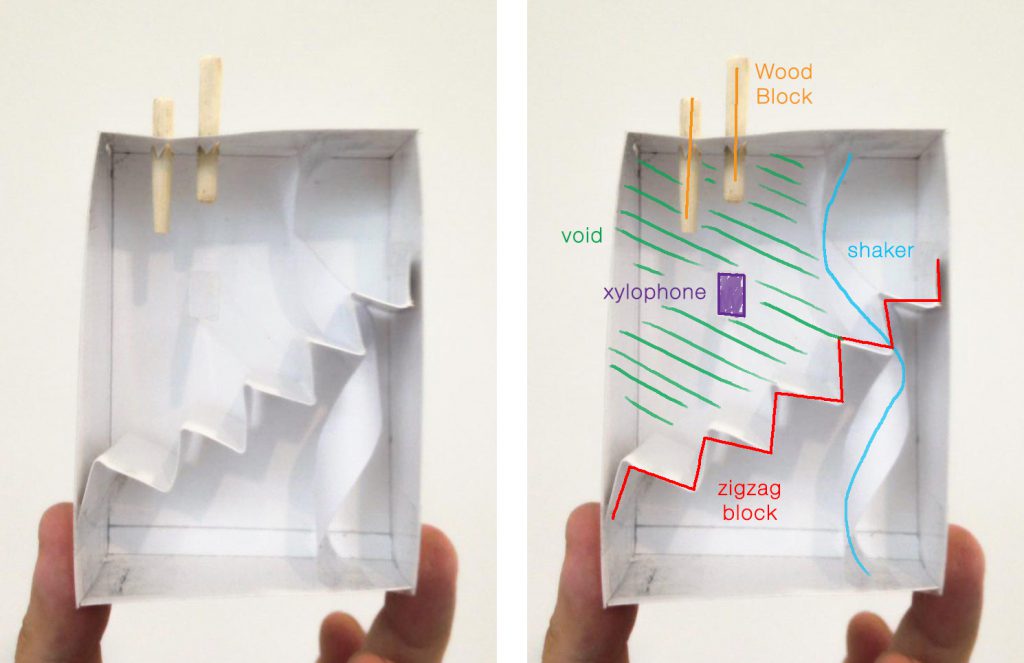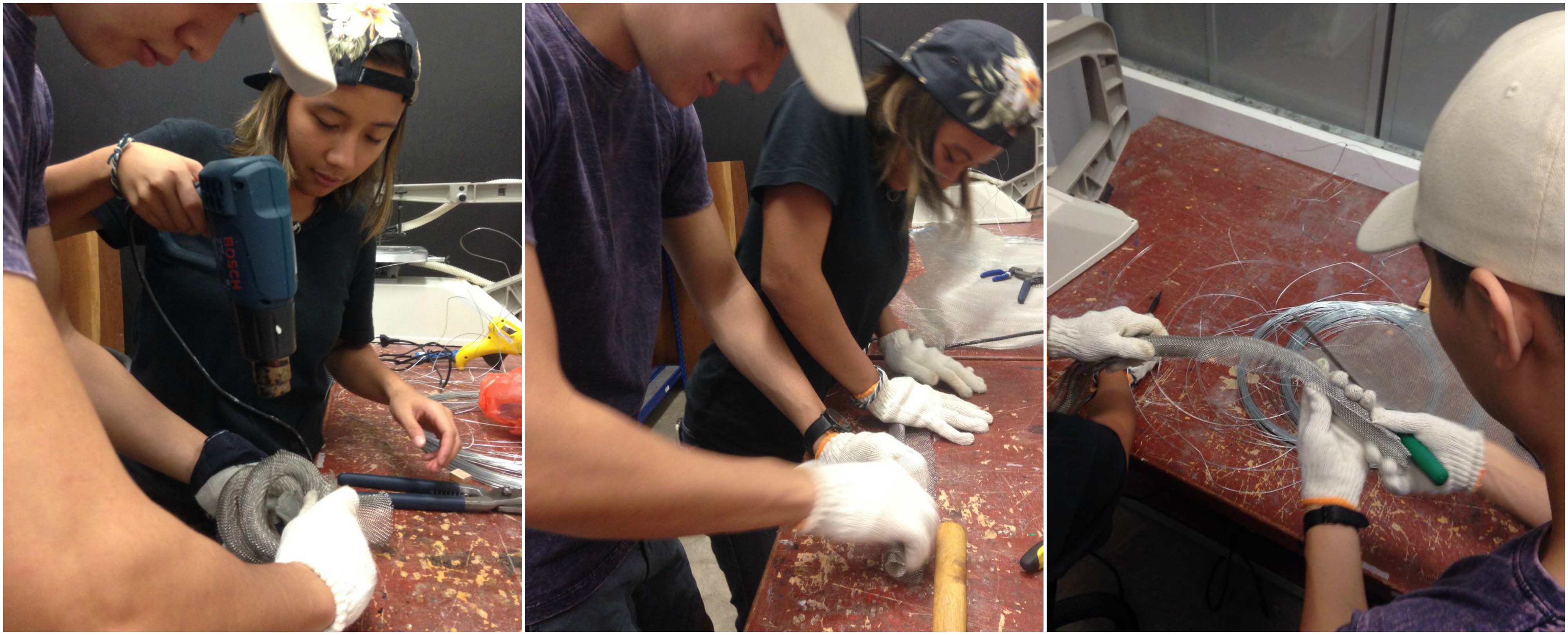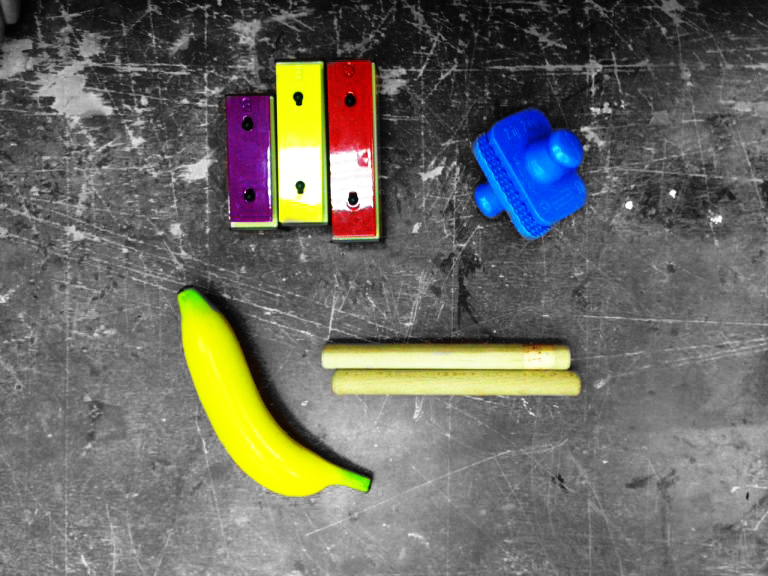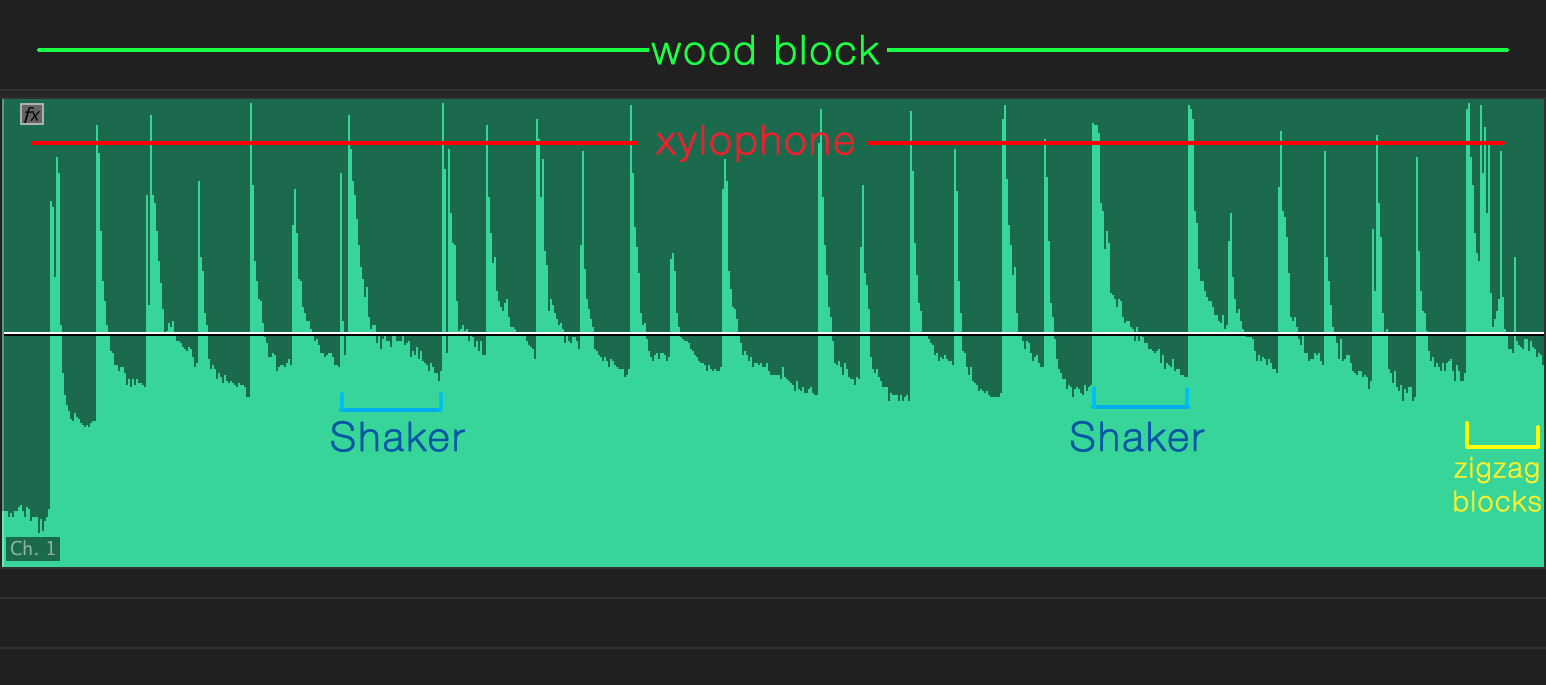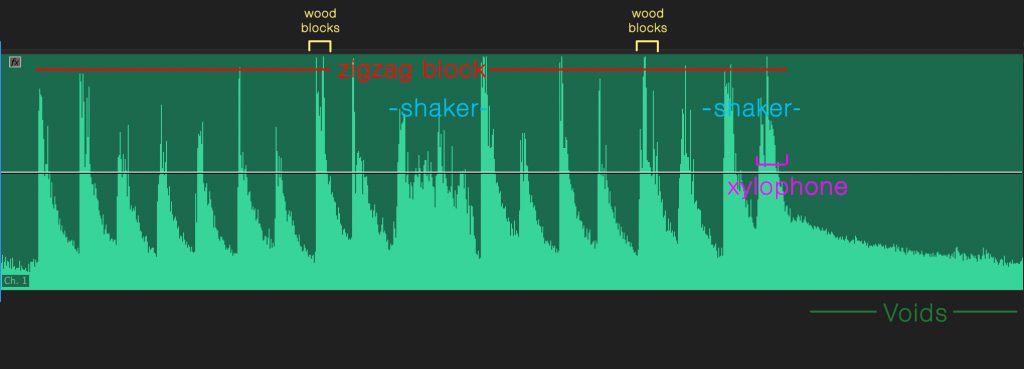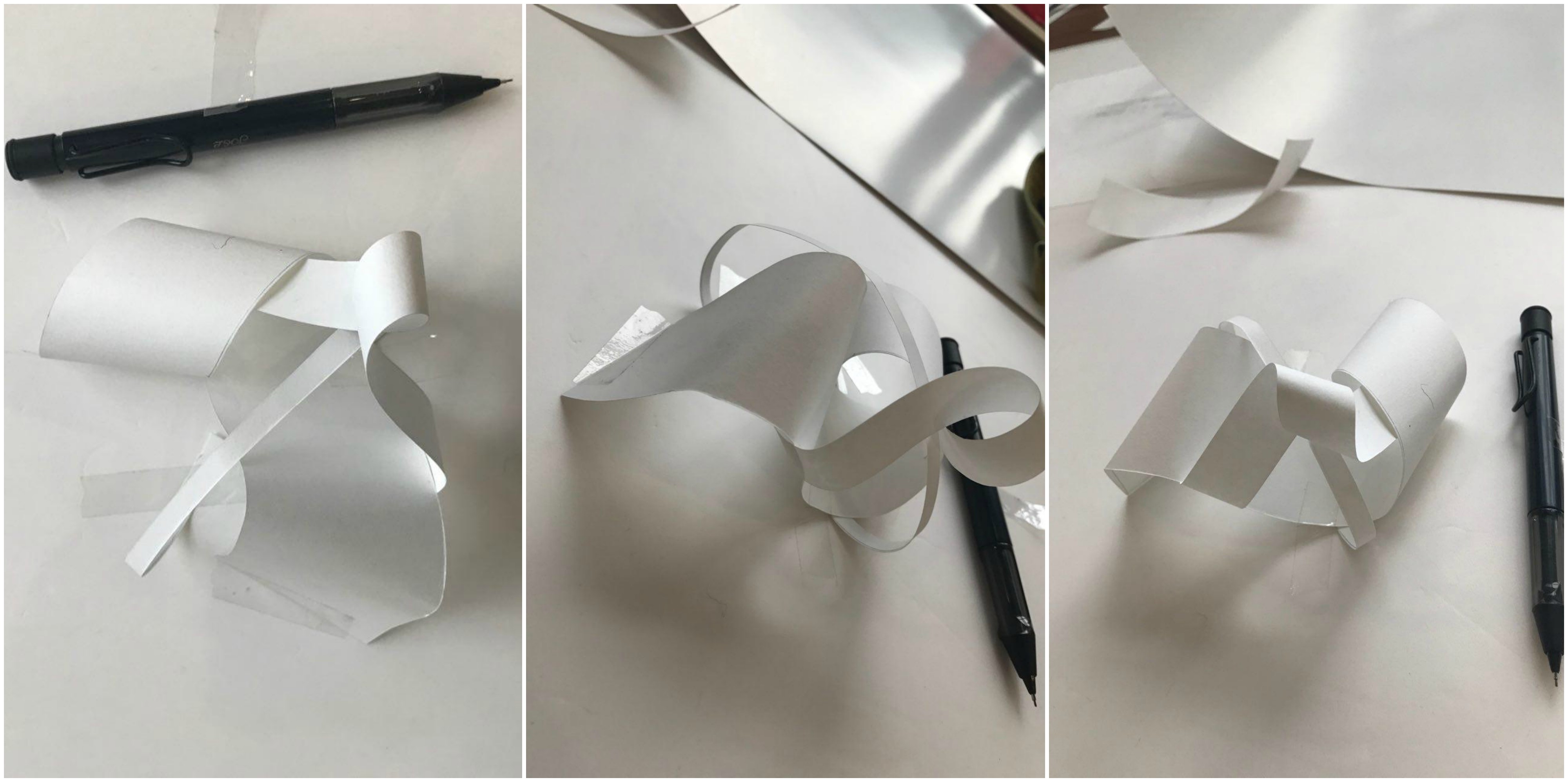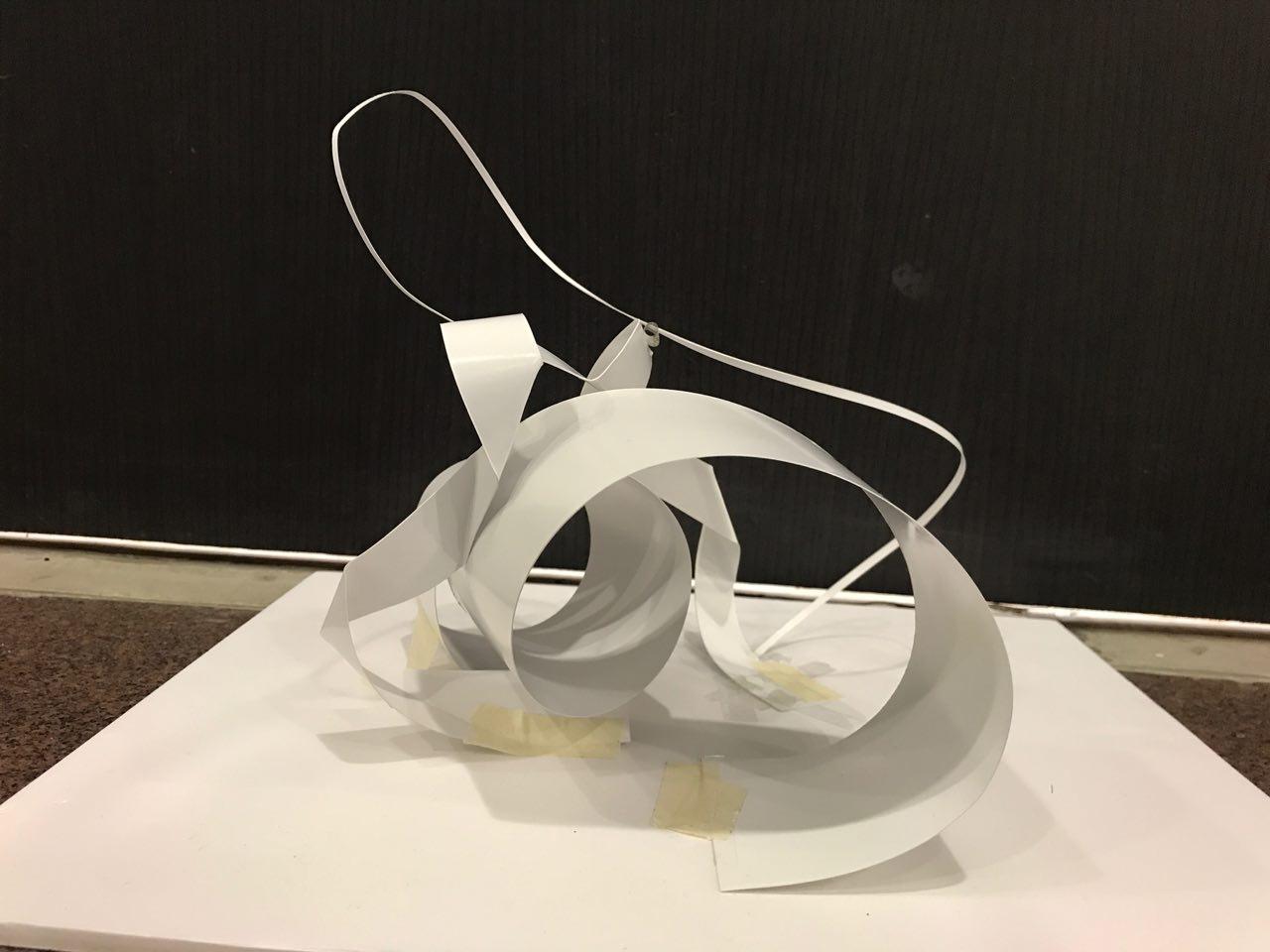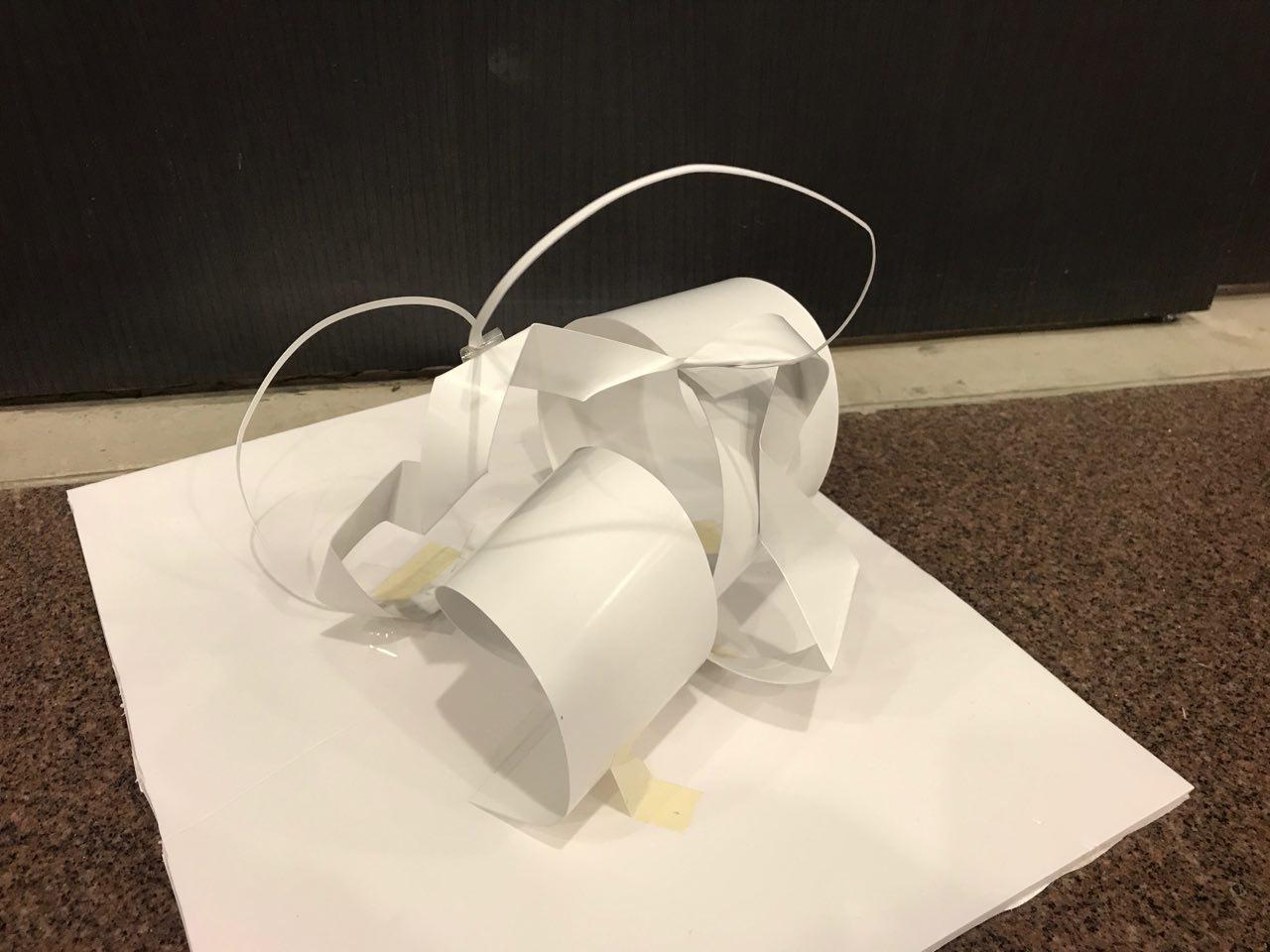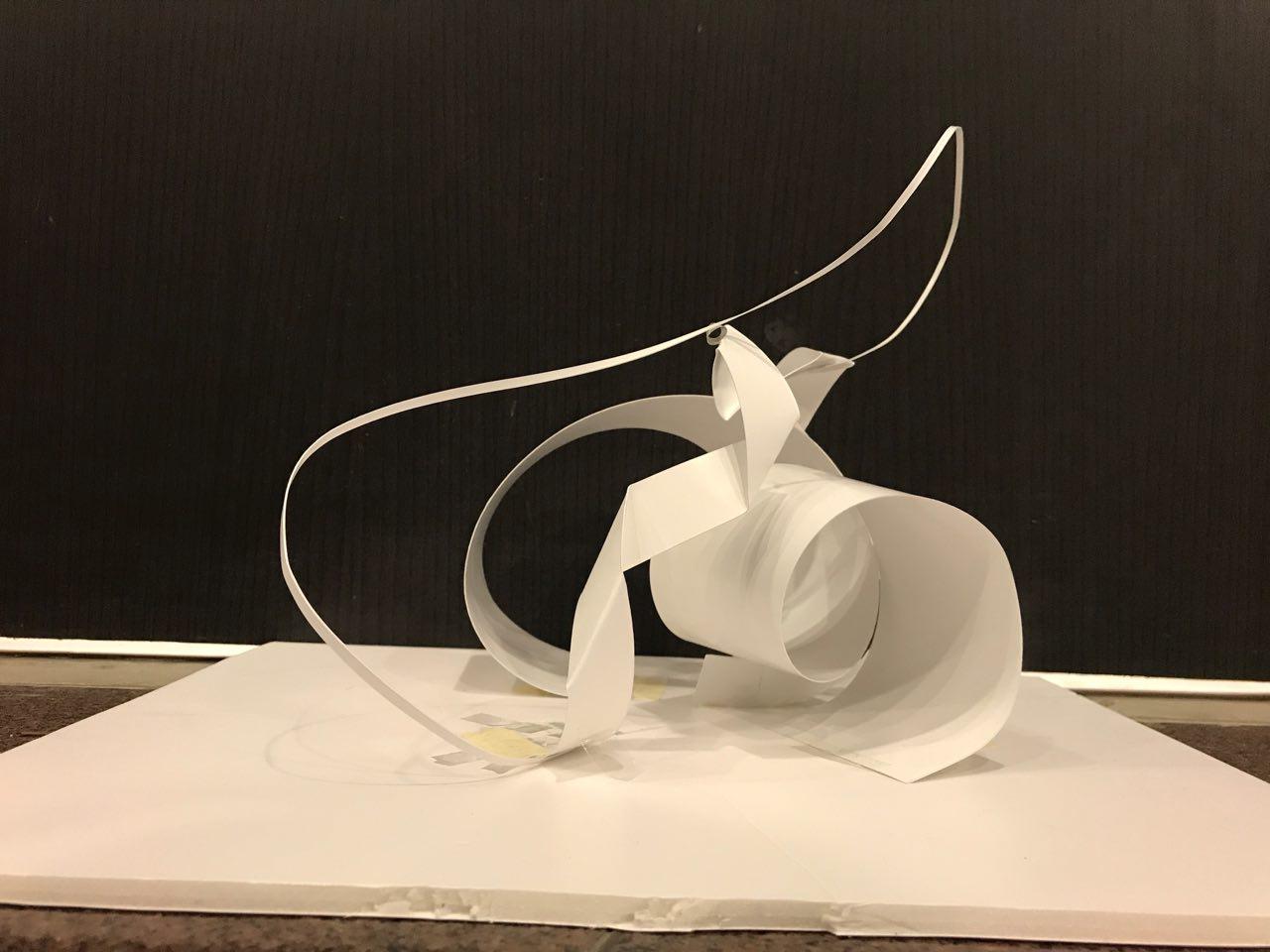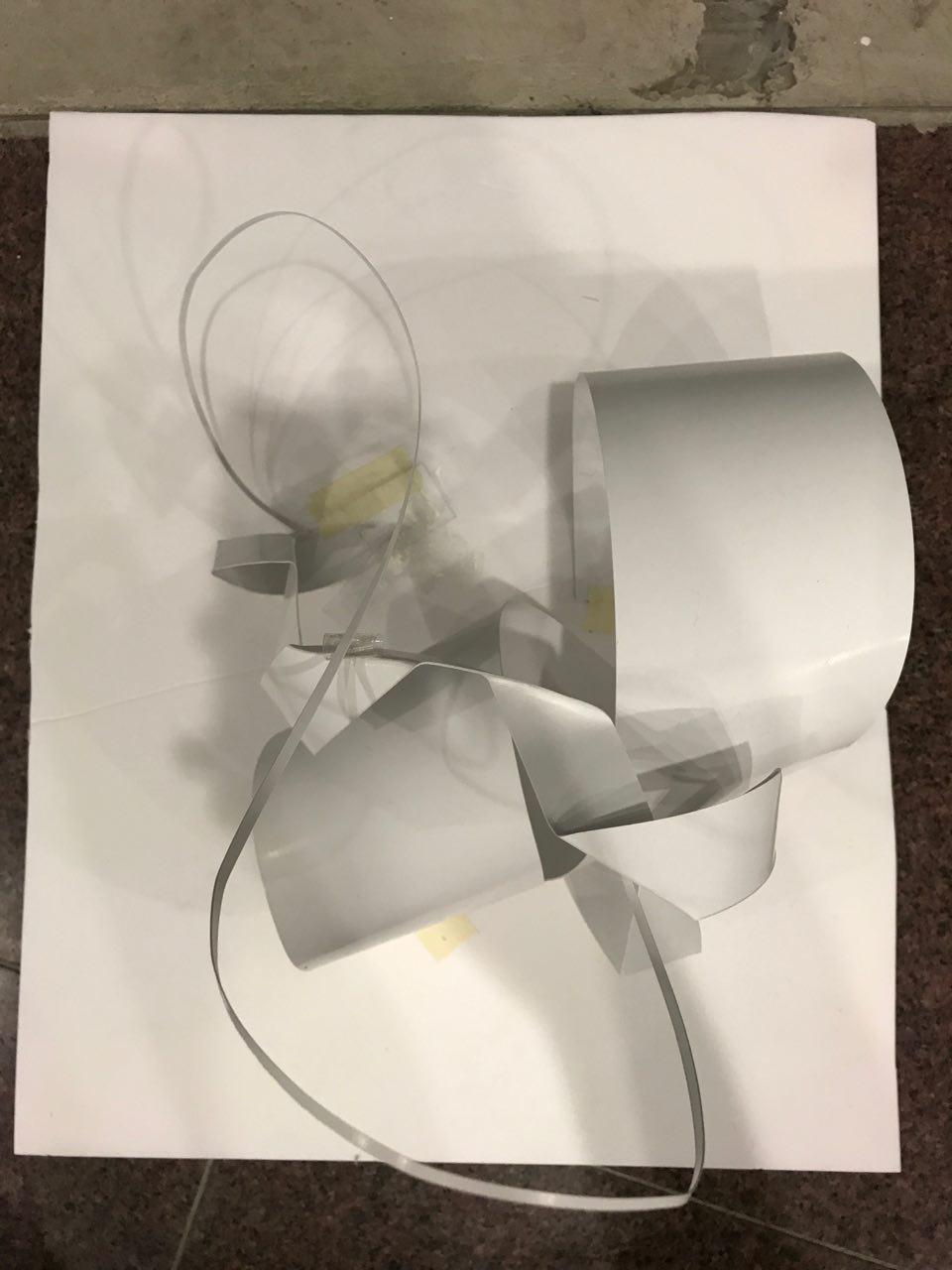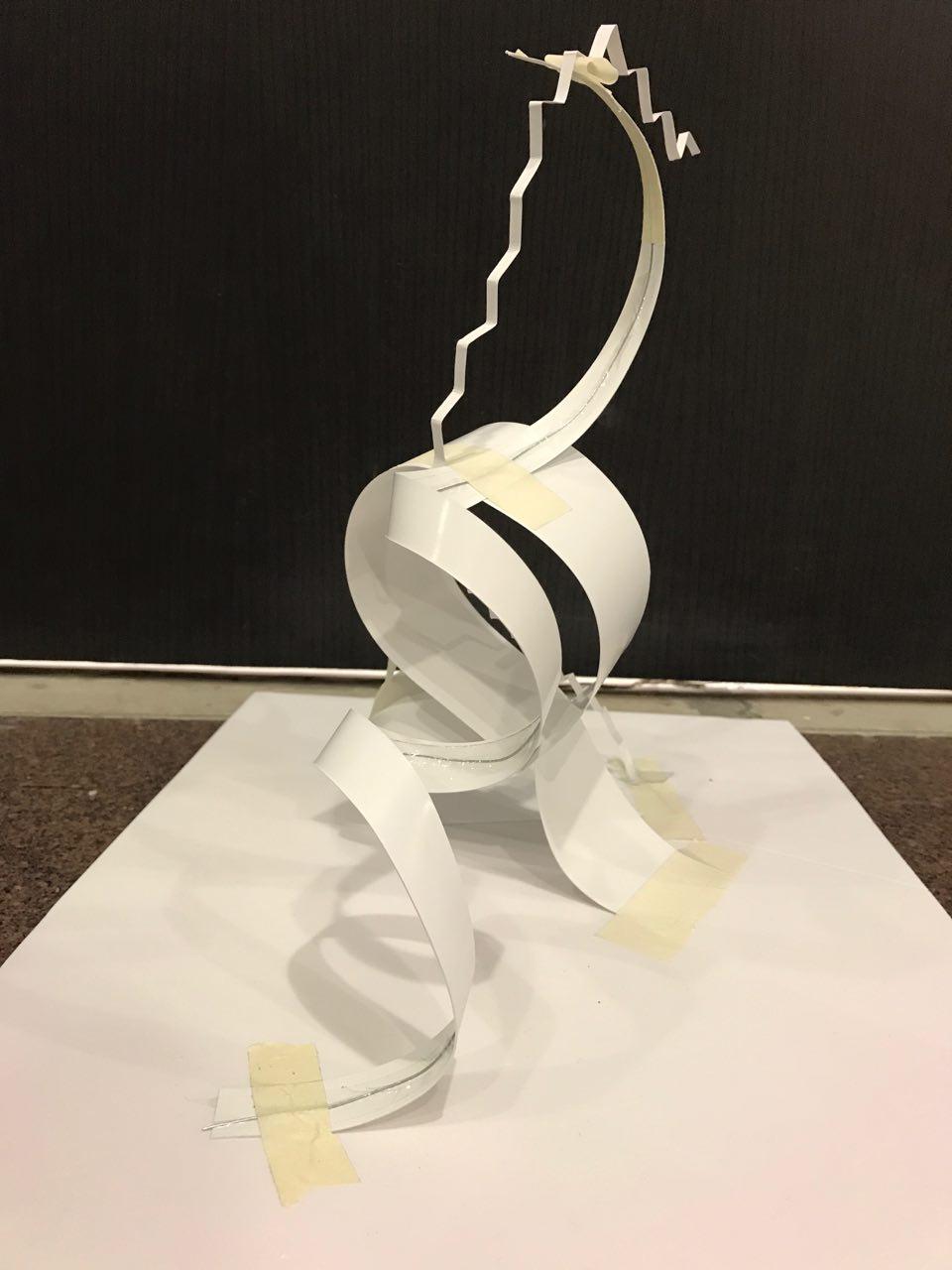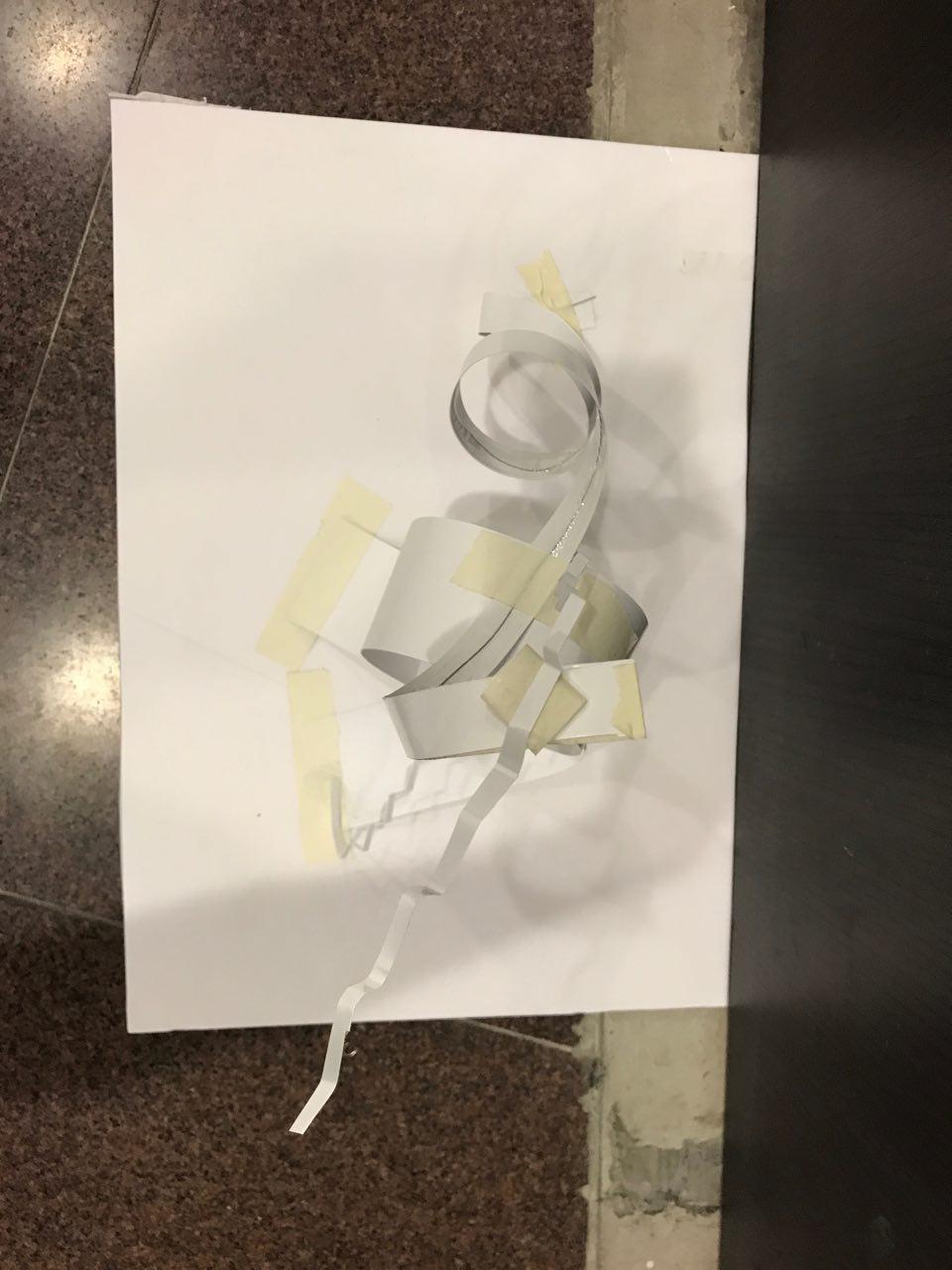Category Archives: MA
City of Voids – Construction of City
Welcome. It is the year 2050, where mankind have found a way to build structures higher than ever before. But before we delve into this futuristic world, let us see what brought them here.
Idealisation
It all began with a sound – a tune. This tune was fabricated by the most masterful musicians the world could find. This would be used as the inspiration for the city.
You cannot help but feel a sense of serenity when as the tune is being played. Composed of different instruments, each brings a new idea and elements to the development of the city.
The team took the best elements from their individual mood boxes and placed them into the group mood box.
Zig Zag Block – The rough sounds of the zigzag block is consistent throughout the piece. To demonstrate this, we took a hard wire mesh and warped it to form a spiral through the entire frame. The rough and prickly texture was to represent the unevenness of the Zig Zag Block.
Shaker – Like above, the shaker evoked a sense of falling beads or water. To show this, we cut up pieces of blue acrylic in the shape of triangles and hung them off fishing lines to represent rain cutting through the voids.
Wooden Blocks –The wooden blocks appears several times thoughout our composition and it pierces the rhythm of the constant sound the Zig Zag Blocks make. This was represented by the penetration of the wire mesh by the wooden sticks.
Tone Bars and Void – The tone bar was a final note before silence. The sound seemed to linger in the air before dissipating. To show this, we used cotton wool and we attached it to the top of the wire mesh, outside of the entire frame. It was crucial for the cotton wool to be outside the frame as we wanted to show how it slowly fades into the air.
Moving on to the construction of our city!
The builders had many ideas for how their city would look like. As the builders of this city felt that the sound used for the inspiration had many elements of serenity and tranquility, we wanted to explore that idea.
One element that often popped up during discussions was the use of water for our city. By incorporating water into the city, we could use it as a viable means of transport.
We begin with several sketches.
After looking at the sketch, the builders decided to look for what kind of modular structures they could incorporate into their model. What better way to source for inspiration than mother nature herself.
They looked into various habitats in the sea. Coral reefs were one of the biggest inspiration for their ideas. They also looked into sea creatures which live amongst these habitats! Most notably, fishes and turtles. The scales of fishes form a unique over lapping structure which protects them from predators as well as reducing drag underwater.
Next, we have turtles! Their shell closely resembles that of fishes as they have a shape similar to a pentagon.
As the brainstorming continued, one of the builders started to get hungry and his mind started drifting off. However, as he was lost in his world, he found a eureka moment! Nagashi Somen (Bamboo noodles) came into his mind for the use of a modular structure.
Bamboo has been widely used for construction in Japan (our builder happens to also be half japanese) and we delved into researching the types of structures we could create using bamboo.
As they initially wanted to incorporate the use of water in the city, bamboo was the perfect choice as it is waterproof as well as light which made it a versatile material to use.
They also incorporated elements of coral reefs into the concept, by using the modular structures of the corals as the habitat.
The idea was to have a central canal which would run through the entire city, providing them with a highway for commuting. We would also have different levels to the city, which was inspired by Bamboo fountains.
However, as the builders brought their ideas to the Governor, she warned us that the materials required would be too expensive and it would also be difficult to construct as the material is rigid and difficult to manipulate without proper equipment. The governor generously shared her wisdom with the builders and advised them to use PVC piping instead. This would result in a easier material to work with as well as saving them money.
It was back to the drawing board with their idea as they could not execute the multi-tier city anymore as it would look out of place using bamboo. With the use of PVC piping, it evoked a more futuristic look.
As they re-imagined the city, they started to look for ideas on what would make it look like a futuristic city. When they thought of cities, extremely high-rise buildings comes into mind. This gave them the idea to create the illusion of having a ‘floating’ city with the use of mirrors.
They had many discussions on how to create such a look as there were many elements to consider such as the source for our materials and the execution as none of them have ever attempted something like this before. They came up with more sketches to try and envision how our city would look like.
There was also the problem of lighting. As light was crucial to create the illusion, they had to decide if we wanted the lighting to be on the buildings, or within the buildings.
They then settled for the lighting to be internal as it would have looked too forced if the lighting was from the outside. However, by having the lighting inside the buildings, they had to think of ways to place a strong enough light source within such a small area.
After they decided the look of the city, theystarted to source for inspiration on how our city would look like.
One of the inspirations was the tallest building in the world, the Burj Khalifa in Dubai. This structure has a similar form to PVC piping and is a great place to begin. However, the structure looked too uniform and the builders realized that it would not make for a interesting composition when coupled with mirrors from their installation.
Once again, the builders were back to the drawing board. They decided to turn to nature again to source for their inspiration. Little did they know, that this process of looking to nature for inspiration is called biomimicry design, as explained by this video.
As the builders wanted to evoke the feeling and illusion of verticaility, we turned to structures which seem to be spanning upwards.
DNA’s structure has a spiral form and the spiral implies a direction. This was useful research as the builders could incorporate this into the design of the city to give it the look of ascension.
They also started to source for structures which may have similar qualities.
This is the F & F Tower located in the city of Panama. The spiral gives the illusion of the building reaching into the sky.
As the city would be located within a dark area to make full use of the illusion of an infinite building, it had to be located in a dark area. The builders set out to find a suitable location for their city.
They stumbled upon this obscure place, one that has been left untouched for ages… it almost seemed as though there used to be another civilization which lived there…
This location seemed to be in line with the theme of verticality as well as their choice of materials which made it a perfect location. The eyes are naturally drawn upwards because of all the lines the pipe creates, giving the sense of voids within the space.
With everything in place, they set forth to build the city!
Prototyping
They began by building a prototype based on the various inspirations which they found.
The builders wanted to incorporate the spiral into their composition. They also left holes between each module which represented a window.
With the structure in mind, they set out to purchase the needed materials to build the structure.
They first began by selecting pipes of different sizes and materials. After which, they proceeded to create the hub.
The pipes were stuck together using Blu-tac initially to ensure that the builders could still change the design if there was any additional feedback.
Slowly, the city was coming together.
One Way Mirror
Next, the builders had to source for a one way mirror. As purchasing one would be too expensive for them, they managed to find a seller which offered one way mirror films. This was much less expensive and it allowed us to work with more materials.
The mounting of the film was a tricky process, however, after the first failed attempt, our builders managed to apply the film onto the acrylic board properly, with minimal bubbles.
If you look closely at the image below, you can see that small bubbles of impurities have appeared on the surface. The team was not satisfied with this craftsmanship which was why they decided to try again, this time in a more sterile environment.
The second attempt was much more successful as we had the proper tools to do the job and we had a smooth surface. As you can see, one of our skilled builders making sure that the impurities were a thing of the past.
The film was applied masterfully thanks to the dexterity of Hannah!
After sorting out the one way mirror, the team moved on to find out what is the best way to light their structure.
Framing
Initially, the team used a wooden frame for their model. However, this distracted the audience from the full experience as the frame could be seen in the mirror.
The team then changed the frame by using flat boards instead of long pieces of wood so that the edges would be flush against each other.
The builders then spray painted the sides to be glossy so as to reflect more light from the city.
Lighting
This was the biggest trouble the builders faced as the light source had to be strong enough to produce the full effect. We had a variety of sources of light, however, all of them had to be connected to a socket which was tough because there was no sockets around the obscure location.
These were some of the lights which the team found but could not use.
LED Strips from IKEA.
Strip LED lights
We had to source for battery operated lights.
Thankfully, we were able to find strong LED lights used for hiking and biking.
The team attached two of these onto both the top and bottom of the hubs to increase the intensity of the light. For greater measure, the team lined the inside of the pipes to allow the light to bounce off the walls better.
This directional light was God sent as we used it to light the habitats.
Highway
The highway was put together using straws. The team had them descending as they wanted them to join with the main structures of the city.
Putting the City together
Revealing,
People up working late at night in the hub. Society has found a way to do away with sleep.
Due to the height of these structures, residents are required to travel with an orb as the atmosphere is too thin, resulting in little oxygen in the air.
More close ups on the city
Overall, I’ve grown tremendously during this first semester in terms of craftsmanship as well as idealisation. I realised that no one form of art can be compartmentalised and separated from each other as they can all be interwoven with each other.
Despite my confusions at the start of this assignment, I was really glad how it all came together nicely once we took a step back to look at the results. It is amazing how such a seemingly insignificant tune of less than 30 seconds could convey such a strong message when we break it down to its individual components.
I feel that breaking down elements to their dominant, sub dominant and sub ordinate can be applied in all forms of art, design and media as we have progressed through all of the past assignments in this semester.
Thank you Cheryl for being such an inspiration to your students and to me!
City of Voids – Group Mood box
After the creation of our individual mood boxes, we now move on to our group mood box.
We had several ideas for how we wanted our group mood box to look like.
Here are some of our initial sketches:
The materials represented in these sketches were ones taken from our individual mood boxes.
Hannah adopted a different approach to the sound. She made use of sharp waves to represent the sound which the Zig Zag blocks make, coupled with the ascending order to build up suspense to the next instrument.
The next instruments were the Tanggu sticks and the shaker. From here, we can see a common trend in using wooden sticks to represent the Tanggu sticks. The shaker is represented using a small piece of acrylic as its presence is less dominating in comparison with the Tanggu sticks.
At the end, we have a sharp drop. This is to represent the sound which the tone bars makes. This sudden contrast in composition would make sense only when the audience has heard of the sound. As you can see, the wire fades into the frame which accurately captures the essence of the sound dissipating into the air.
Ying Hui cleverly represented the dominant by using paper folded into a zig zag pattern as seen from above to create the texture of the sound which was rough.
The sub dominants can be seen from the use of tooth picks as well as the curved paper to represent the Tanggu sticks and the shaker respectively. As you can see, the toothpicks pierce the papers, similar to what Fendi depicted.
At the bottom, there is a subtle hint of the tone bars sound which is represented by the cotton wool.
For Fendi’s mood box, he played around with different compositions of the sounds.
The rough sounds of the zigzag block is consistent throughout the piece, thus it runs across diagonally across the box, creating a sense of dominance.
Like above, the shaker evoked a sense of falling beads or water. Thus he used a gentle curved plane that goes downwards to represent an organic flow.
Fendi felt the wooden blocks were an element that seem to be a hard, short sound that comes out in the distance as a sort of echo. Thus he placed it almost piercing out of the box, as though a man was in a distance, clapping his hands.
The tone bars was a final note before a long silence. He showed this by piercing the void with a piece of acrylic to show how the note seemed to echo in a void space.
Making the components for the Mood Box!
As you can see, there are some consistencies with what materials we use. These include the wooden sticks to represent the Tanggu’s, cotton wool to represent the tone bar at the end of sound 2 and the Zig Zag pattern for the dominant zig zag blocks.
However, we wanted to try a different approach to the dominant which was the zig zag sound. Instead of using crumpled paper or plastic to represent the rough sounds of the zig zag blocks, we used hard wire mesh instead!
Making of the dominant:
Here you can see Hannah and I struggling to get the wire mesh into the form we wanted. We had to use a heat gun to mold it into shape.
We vaguely look like modern sushi chefs trying to make a maki roll….
Making of the Sub Dominant:
As we agreed that the shaker sound seemed to resemble the idea of a rain drops or water droplets, we went ahead and cut blue acrylic to small triangles, to show it piercing the sound, similar to the Tanggu wooden sticks.
Hannah and I used the soldering rod to pierce holes into the acrylic pieces and the warped wire mesh respectively.
Making of the Sub Ordinate:
The making of the sub ordinate was a tedious process as we had to gingerly fluff up the cotton wool while try and hold it in place with glue at the same time. We spent a tremendous amount of time pulling apart the cotton wool to make it look like a cloud – I really thought it would be easier.
Putting it altogether!
Zig Zag Block – The rough sounds of the zigzag block is consistent
throughout the piece. To demonstrate this, we took a hard wire mesh and warped it to form a spiral through the entire frame. The rough and prickly texture was to represent the unevenness of the Zig Zag Block.
Shaker – Like above, the shaker evoked a sense of falling beads of water. To show this, we cut up pieces of blue acrylic in the shape of triangles and hung them off fishing lines to represent rain cutting through the voids.
Wooden Blocks – We wanted to give the idea of the sound of the sticks piercing through the constant sound of the Zig Zag blocks. The sound also appears twice before the sound of the tone bars which was why we repeated the effect.
Cotton Wool – The group enjoyed the idea of the sound fading into the distance, which is why we wanted the cotton wool to protrude out of the frame, dissipating into thin air. As the cotton wool blends in well with the background we, it was an apt choice of material to encapsulate the idea.
City of Voids – Individual Mood box
It has come to our final assignment! I am not going to lie, but this was one of the most confusing assignments to work on from the beginning, when Cheryl asked us to make music in class.
We learned a little about music and its scales, after which, we had to create 2 sounds using a variety of instruments Cheryl brought for us. These were the ones we picked.
The instruments include:
- Tone Bars in Dominant 7 Scale
- Zig Zag Blocks
- A shaker in the shape of a banana
- 2 wooden sticks used to play the Tanggu Drums
Thankfully, we had 2 musically inclined students, Hannah and Ying Hui to help us compose the various sounds as the dominant 7 Scale is not one which is easy to work with.
Sound 1:
Dominant: Tanggu Sticks form the beat of the sound, while the
tone bars provided the tune for the sound.
Sub Dominant: The shaker came in after every fourth beat,
making it evenly spread out, making it the sub dominant.
Sub Ordinate: The Zig Zag Blocks made only came in at the
end of the tune which formed the sub ordinate.
Sound 2:
Dominant: Zig Zag blocks as it formed the rhythm of the sound.
Sub Dominant: Both the shaker as well as the wooden blocks make
up the sub dominant as they came in after every fourth beat.
Sub-Ordinate: The tone bars only comes in right at the end of
the sound when no other instrument is playing, making it the sub-ordinate.
After analyzing the sounds, I proceeded to create my individual mood box based on sound 1.
I went with creating a mood box for sound 1. As the dominant for this sound was the tone bars, I wanted to use metal in most of the composition of this mood box, bringing out the dominant nature of the sound. The wooden blocks acts as steps for the tune to follow, similar to how tunes have to follow the timing of the beat in a song. The silver wire spans through the entire frame as it is constantly playing.
The pieces of blue acrylic depicts the shaker sounds, showing how they pierce the flow of the sound.
We have the sub ordinate which is the cotton wool. This is to represent the nature of the zig zag blocks as the texture and look of cotton wool is non-uniform, and as the sub ordinate, I didn’t want to fill too much of the composition with it.
The elements are floating as I feel that sound does not have a physical presence which is why it should not be resting on anything. If we had an instrument with more bass I may have chose a base for the model to rest on.
Moving on to our group mood box!!
Assignment 3 – Planes
In this assignment, we were tasked to make use of strips of paper to form different type of planes.
These planes include:
2D Flat Plane – Straight Plane without Curves
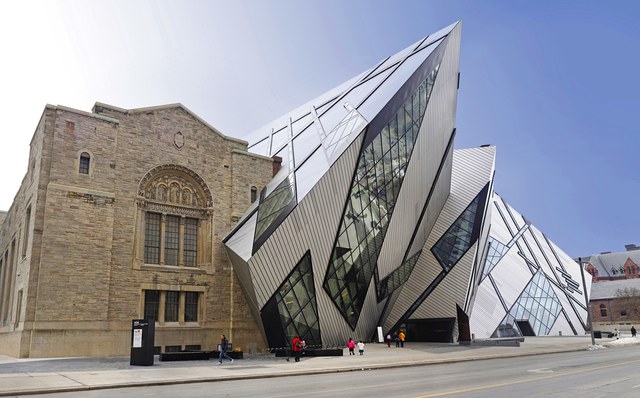
2D Curved Plane – Curved straight plane, similar to sine curve

Broken/Bent Plane – Sharp Change in direction of Plane on a 2D Plane
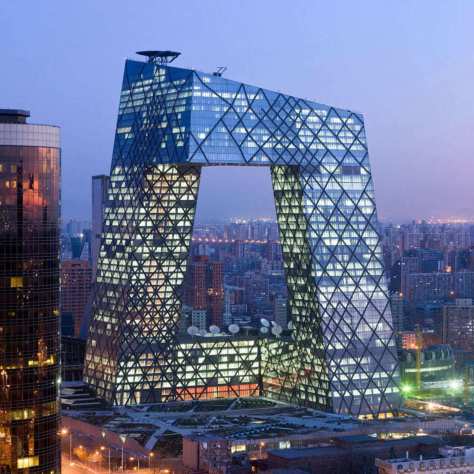
Twisted Plane – Dynamic curve
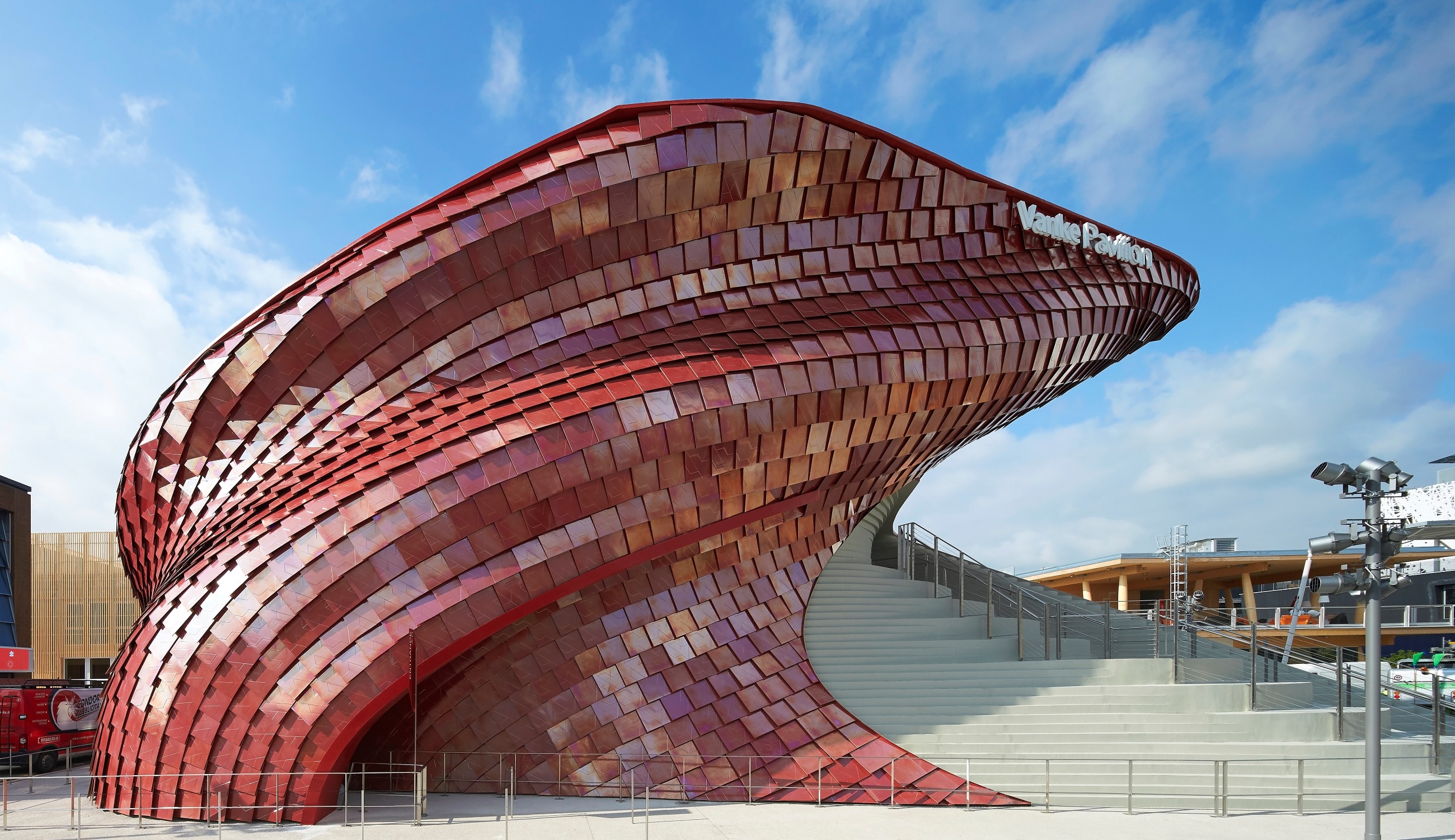
3D Curved Plane –

Artist references
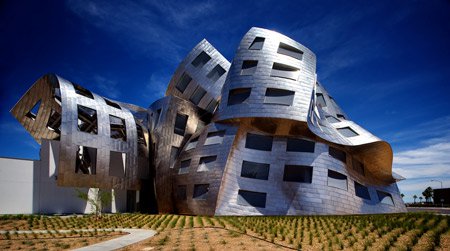
Frank Gehry – One of the greatest Architectural minds of our century. After Cheryl showed us his work, I was intrigued and I went to research more of his works and was amazed at the form of his structures. The composition of his buildings are definitely eye catching and the use of planes with various volumes help keep the composition interesting.
(I can’t help but wonder how disorientating it must feel looking through those windows, let alone living in such a building…)
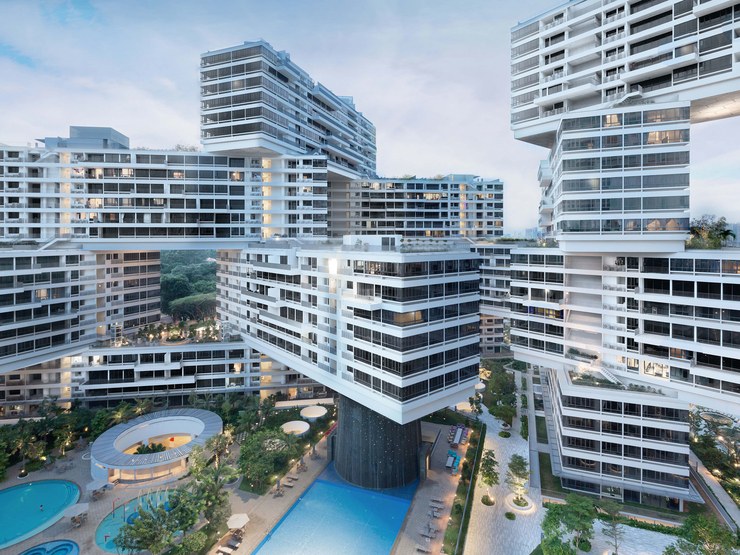
Ole Scheeren – The mind behind the CCTV headquarters in China (Broken plane picture) , as well as the Interlace in Singapore. Ole Scheeren fights the conventional thinking of “Form is function”, and argues with the term “Form is fiction”. Of course form has to include function, however, we should also strive to convey stories though our work. A narrative, a purpose, etc. This building gave me great inspiration for the use of bent planes.
It also ties in with many of our projects as we aim to deliver a story or try to express emotions though our work, not only for 3D but for other modules. In my first model, I tried to incorporate bent planes similar to how Ole Screeren did for this building.
(ITS ALL THE SAMEE!!!!! PANICS!!)
Working on my models
To start off, I initially used smaller strips of paper to craft a mini version of what I wanted to create. However, as I progressed, as I was using regular A4 paper, I realised that the paper structure would not hold up its own weight, unlike the Artcard. Thus I gathered a few elements which I liked about the smaller models and I tried to adapt them to the art card.
This is the first model I came up with! I liked how the SO (the thin strip) envelopes the structure and seems to keep the composition together. However, in this model, I did not explore the use of broken planes or flat planes.
For the second model, I wanted to have a plane piercing another, which is why the 2D curved plane pierces itself. This was vaguely inspired by overlapping cloth. I explored the use of broken planes in this composition which can be seen from the strip of paper piercing through the loop.
Some of the elements I decided to keep was the broken plane from the second model, the 2D plane that pierces itself as well as the SO in the first model.
First Model
As you can see, I managed to incorporate my various inspirations into my first model. From the use of a thin strip as an SO to tie my composition together, coupled with Ole Sheeren’s use of bent planes in the China’s CCTV Headquarters.
Second Model
In my second model, I wanted to incorporate the piercing of planes as well as having planes weave in between each other. This composition was more of trying to play around with the forms as opposed to creating something aesthetically pleasing.
After Cheryl’s comments, I realised that my planes did not offer an interesting composition as my 2D curved plane did not intersect each other at an angle which would have made my model more Dynamic. Most of my strips of paper were also of similar length which made it difficult to differentiate between D, SD and SO.
